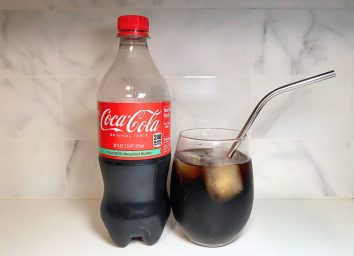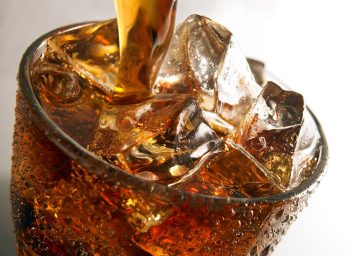30 Coca-Cola Facts You Never Knew
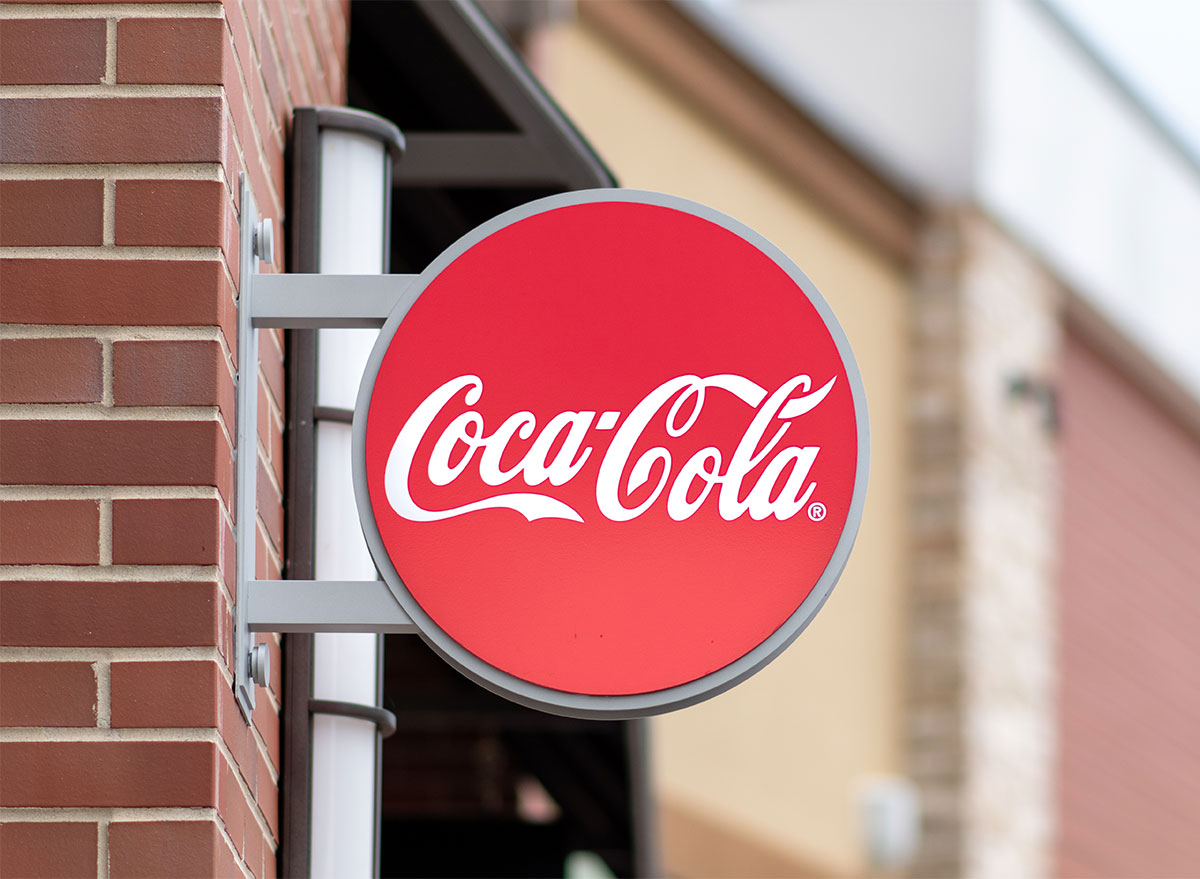
Is there any brand that’s more ingrained in American living than Coca-Cola? Coke is the perfect drink to complement your popcorn at the movie theater, it’s a part of combo meals at restaurant chains, and it’s just plain fun to drink. If you can’t get enough of the classic soda, you’ll love these 30 Coca-Cola facts. They’ll make your next Coke bottle even more fun.
Originally created in 1886, Coca-Cola has been through plenty of ups and downs over the years. But the Coke recipe has stayed largely the same, save for the brand’s ill-advised foray into “New Coke.” The company has also added plenty of other drinks to its name, too, including things like Diet Coke, as well as acquisitions like the Minute Maid family of juices.
And while it will probably be a favorite drink for years to come, Coke fans are doing way more than just sipping it over ice. Recipes like cola chicken and Coca-Cola cake have fashioned new ways to make use of Coke’s sweet, fizzy nature. However you like it, Coke is one product that’s here to stay. So pour yourself a glass and dive into the brand’s history.
And for more, don’t miss 28 Secrets Popular Fast-Food Chains Are Hiding From You.
The logo is red because of old tax laws
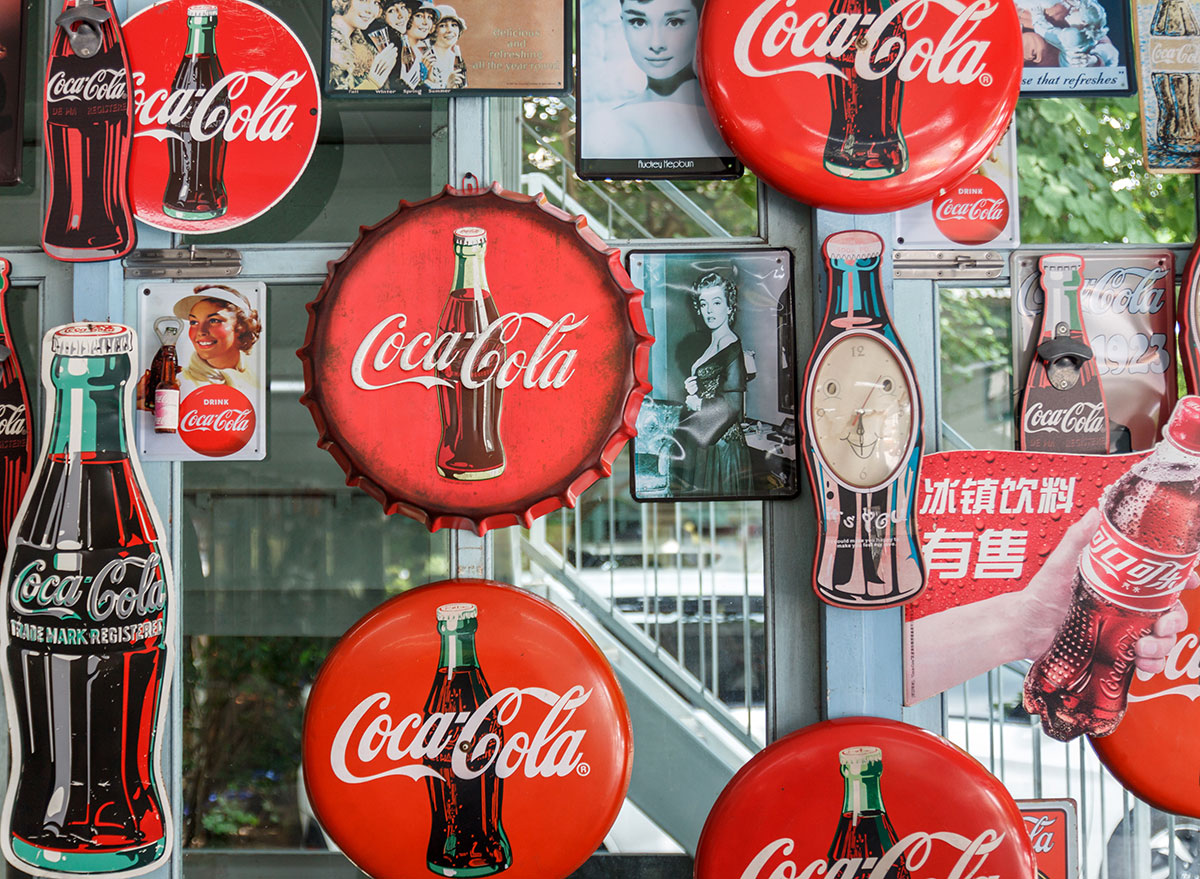
John Stith Pemberton, who created Coke in 1886, had originally billed the soda as a “temperance” drink, or an alternative to alcohol. And because alcohol was heavily taxed in the 19th century, Coca-Cola wanted to make sure its (non-alcoholic) drink wasn’t subject to those taxes.
“We began painting our barrels red so that tax agents could distinguish them from alcohol during transport,” a Coca-Cola spokesperson told Business Insider. The bright color is still an easy way for fans to recognize Coke cans and bottles today.
The iconic bottle design was created to help Coke stand out from its competitors
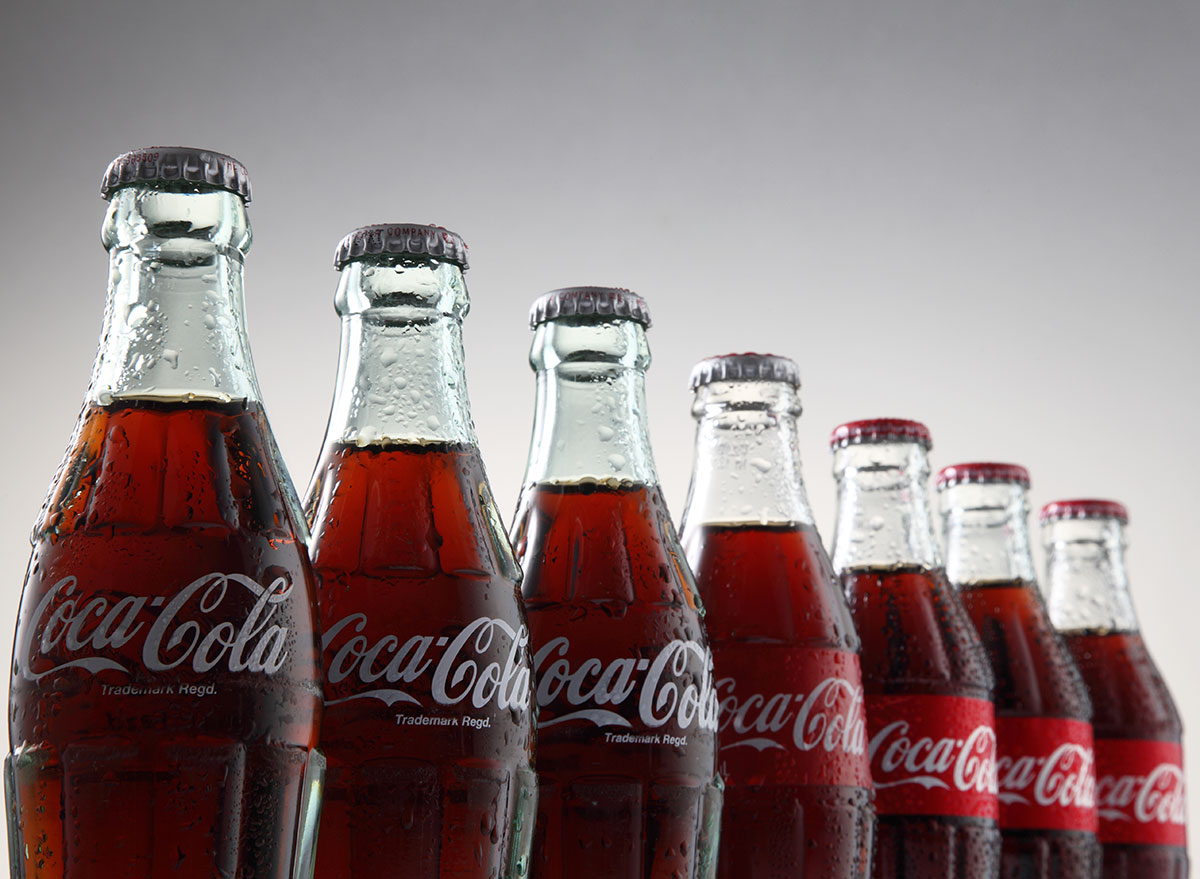
As Coca-Cola explains on its website, there were plenty of imposter sodas trying to cash in on Coke’s fame in the early 1900s. (Some of them had seriously funny names, too, like Koka-Nola and Toka-Cola.) So in 1915, the Trustees of the Coca-Cola Bottling Association asked glass bottling companies to design a “bottle so distinct that you would recognize it by feel in the dark or lying broken on the ground.”
The winning company, the Root Glass Company, created the now-iconic green bottle. With the ridges on each bottle and the embossed Coca-Cola logo, the design set the soda apart from its competitors. These days, you’re more likely to find Coke in a plastic bottle or a can, but you can still find the glass bottles at some retailers.
Coke really did contain cocaine at one point
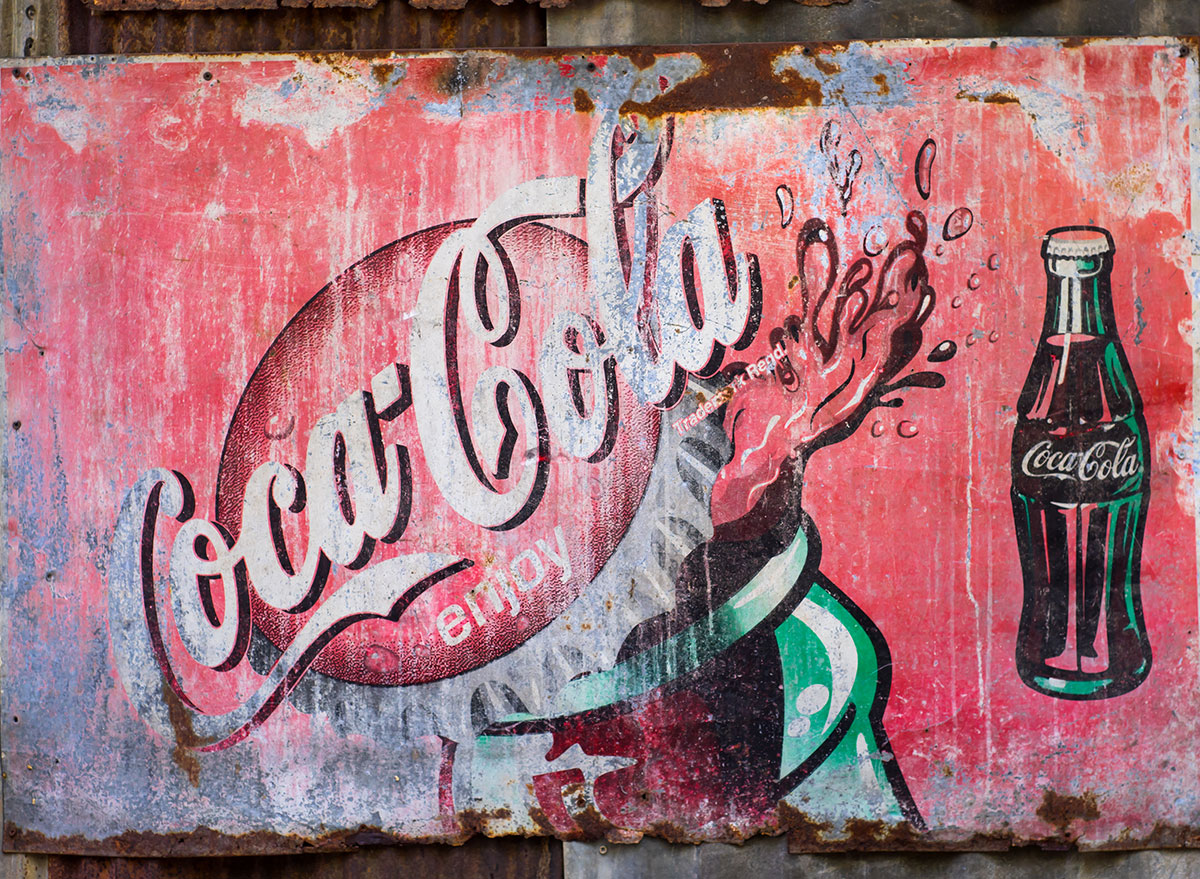
This isn’t just a viral legend—The New York Times confirmed it in a 1996 article that included comments from a Coca-Cola spokesperson.
It all goes back to the coca plant, which cocaine comes from, the Times explained. While Coke contained actual cocaine in the late 19th century, when it was first invented, it now includes a “non-narcotic extract” derived from the coca plant.
“Ingredients from the coca leaf are used, but there is no cocaine in it and it is all tightly overseen by regulatory authorities,” a Coca-Cola spokesperson told the Times in 1996. Still, the paper confirmed that wasn’t the case in Coke’s earliest days.
As History.com points out, though, cocaine and other drugs weren’t illegal until 1914. So while the idea of drinking it in soda seems pretty foreign now, it wasn’t as weird at the time.
Coca-Cola invented the six-pack
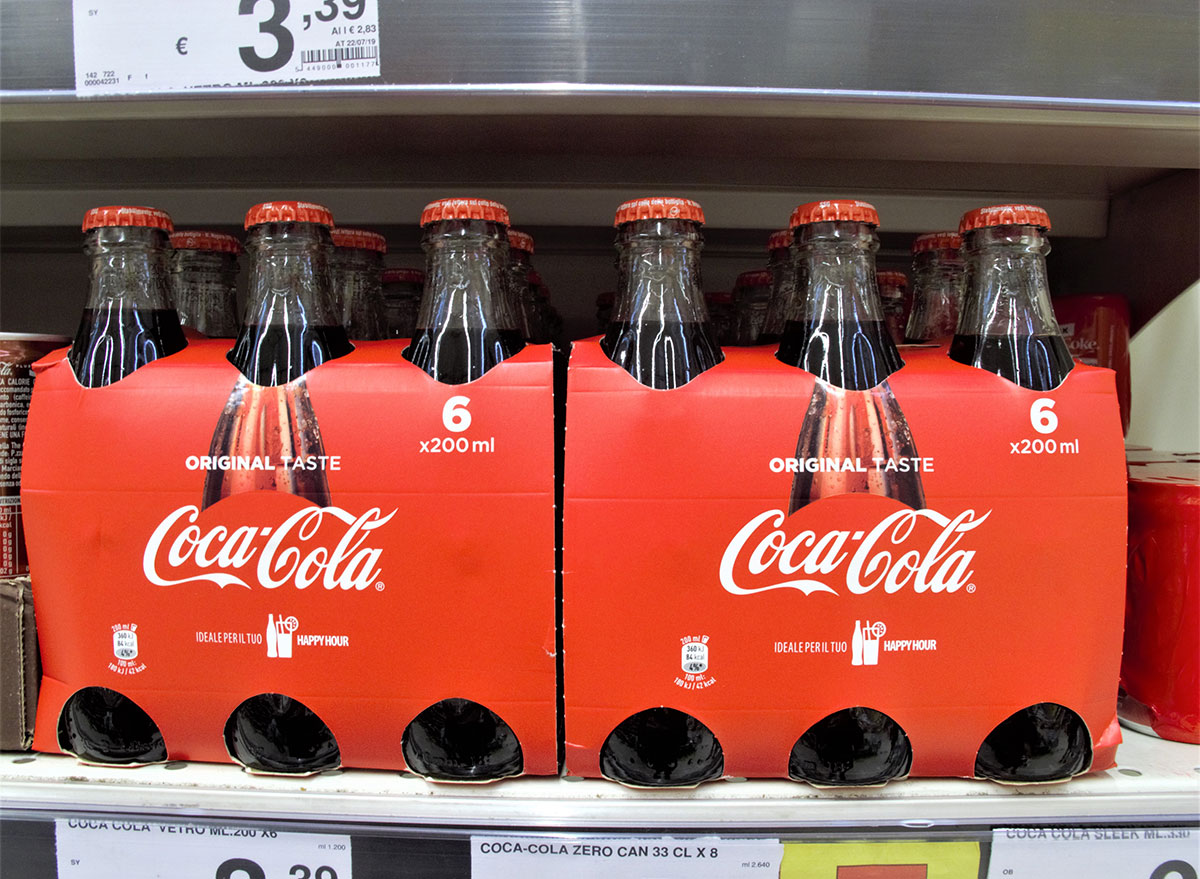
While the term “six-pack” tends to conjure images of beer nowadays, it was originally a way to buy and carry multiple bottles of Coke. According to the company’s website, Coca-Cola invented the six-pack in 1923.
The company helped popularize open-top coolers
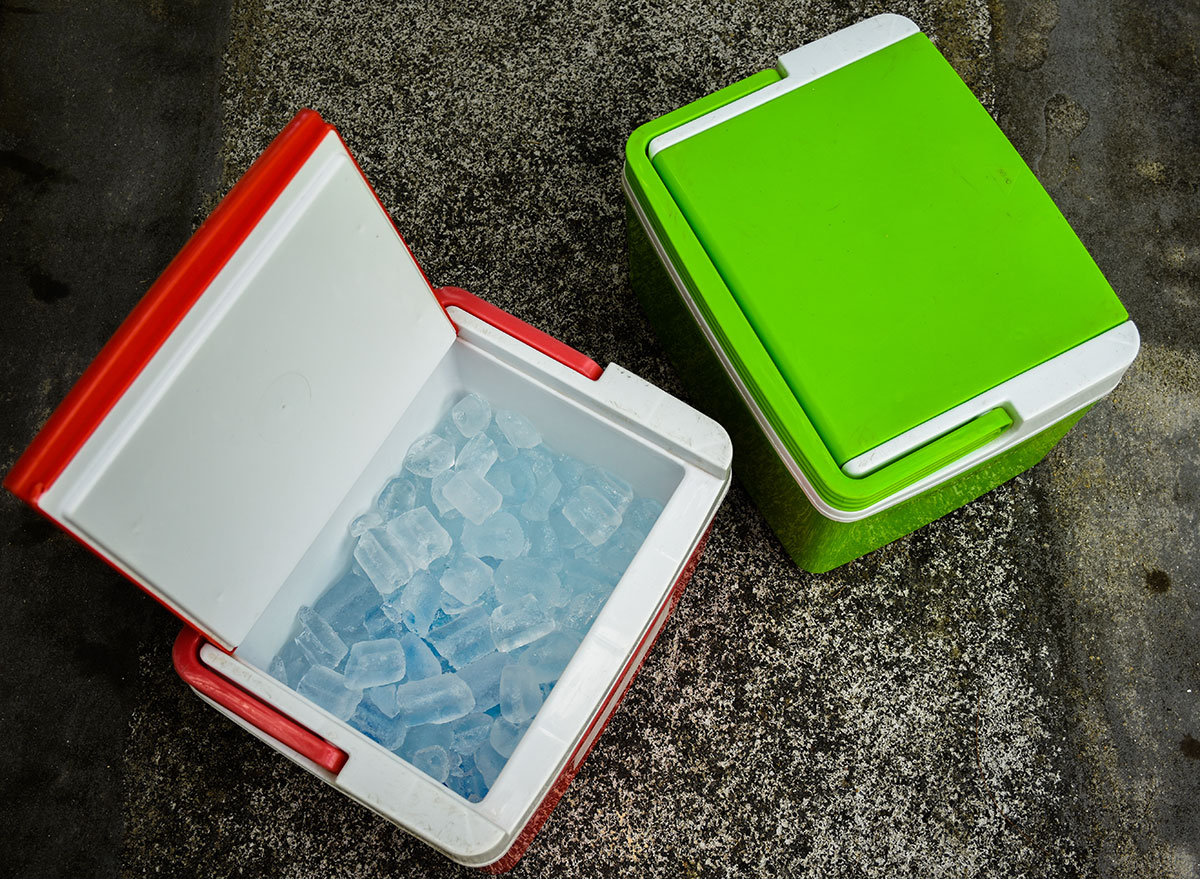
If you’ve packed a tub of soda or beer in a cooler for a road trip or beach day, you have Coca-Cola to thank. While metal buckets had been used to hold water for years, Coca-Cola helped modernize the cooler.
According to a PDF from the company, Coca-Cola debuted “the first standardized open-top cooler” in 1929. The rolling metal contraption held up to 72 Coke bottles, promising to keep them cool.
Coca-Cola later hired industrial designer Raymond Loewy in the 1940s, and he helped create a more portable version of the cooler. The designer even thought to put a bottle opener on the cooler, making it easier to take the drink on the go.
And for more ways to enjoy the soda, check out these 20 Clever Recipes That Use a Can of Coke.
Coca-Cola is at least partially responsible for Santa as you know him
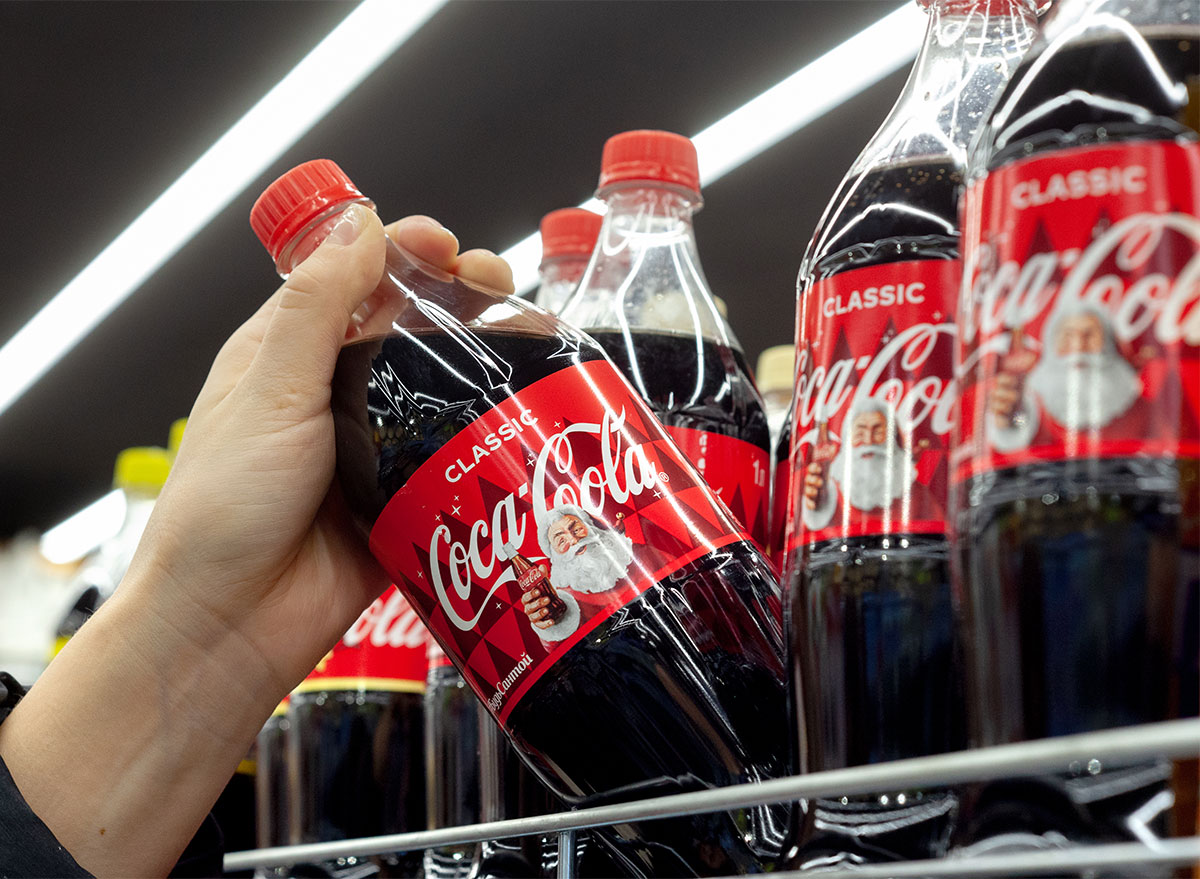
When you picture Santa, is he a plump, bearded older man who’s wearing red? You can thank Coca-Cola for that image, at least in part. In 1931, the company hired Haddon Sundblom to paint images of Santa holding Coke bottles. According to Coca-Cola, those pictures helped “create the modern interpretation of St. Nick.”
The Coca-Cola recipe is kept in a secure vault
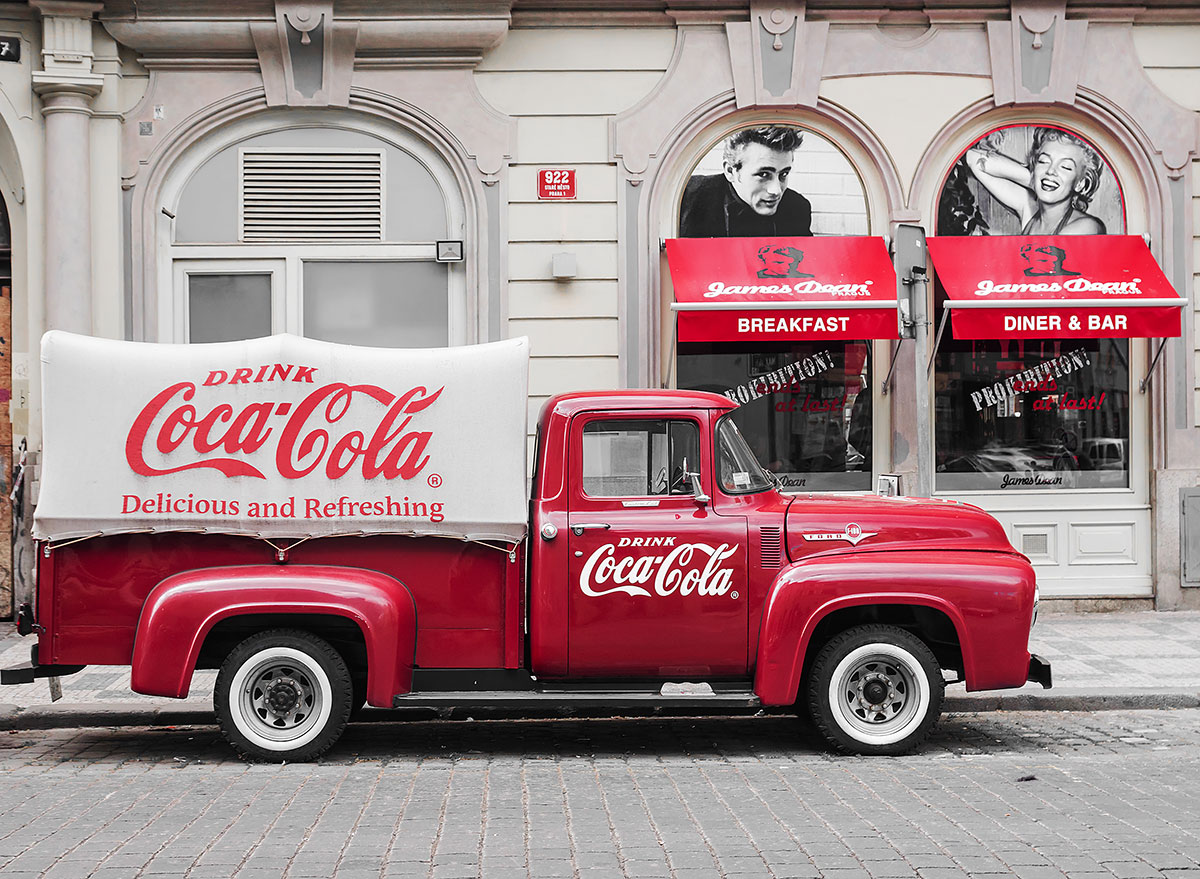
You can’t see the recipe itself, but you can see where it’s kept. At the World of Coca-Cola museum in Atlanta, you can visit The Vault of the Secret Formula exhibit, where the recipe is held.
Before it (well, the vault) was on display at the museum, the recipe was in a vault in an Atlanta bank. Coca-Cola is, quite literally, keeping its signature formula under lock and key.
And in case you’re curious, here are 17 Things That Happen to Your Body When You Drink Soda.
Coke was the first product featured on a Time magazine cover
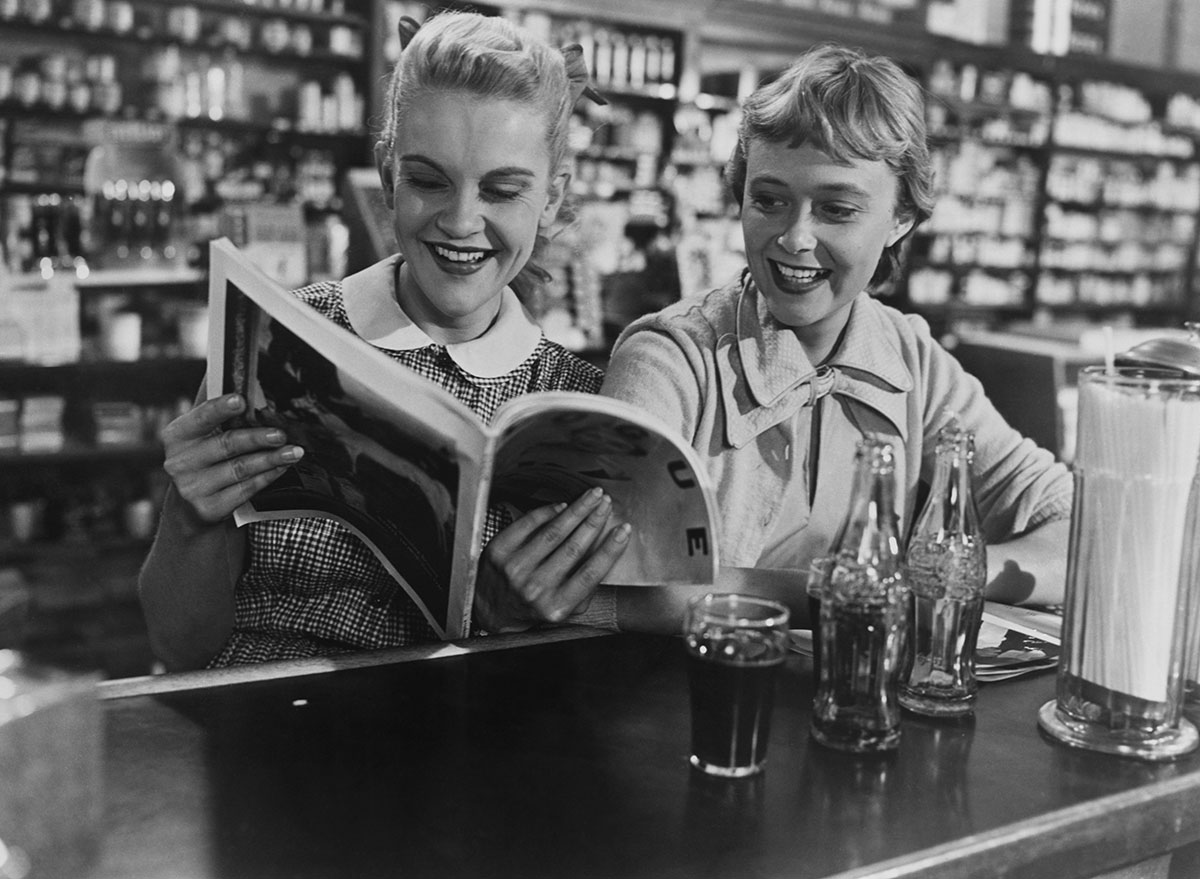
In 1950, Time featured a cover illustration that showed the Earth drinking from a Coke bottle. The artwork shows just how popular Coke had become. But according to the company, the illustration wasn’t what the magazine originally wanted.
“The magazine wants to have a photo of Robert Woodruff on the cover, but he refuses, stating that the product is the only important element in the company,” Coca-Cola explained in a PDF about its history. Woodruff’s intuition seems to have paid off; the cover is definitely a memorable one.
The backlash to New Coke was swift
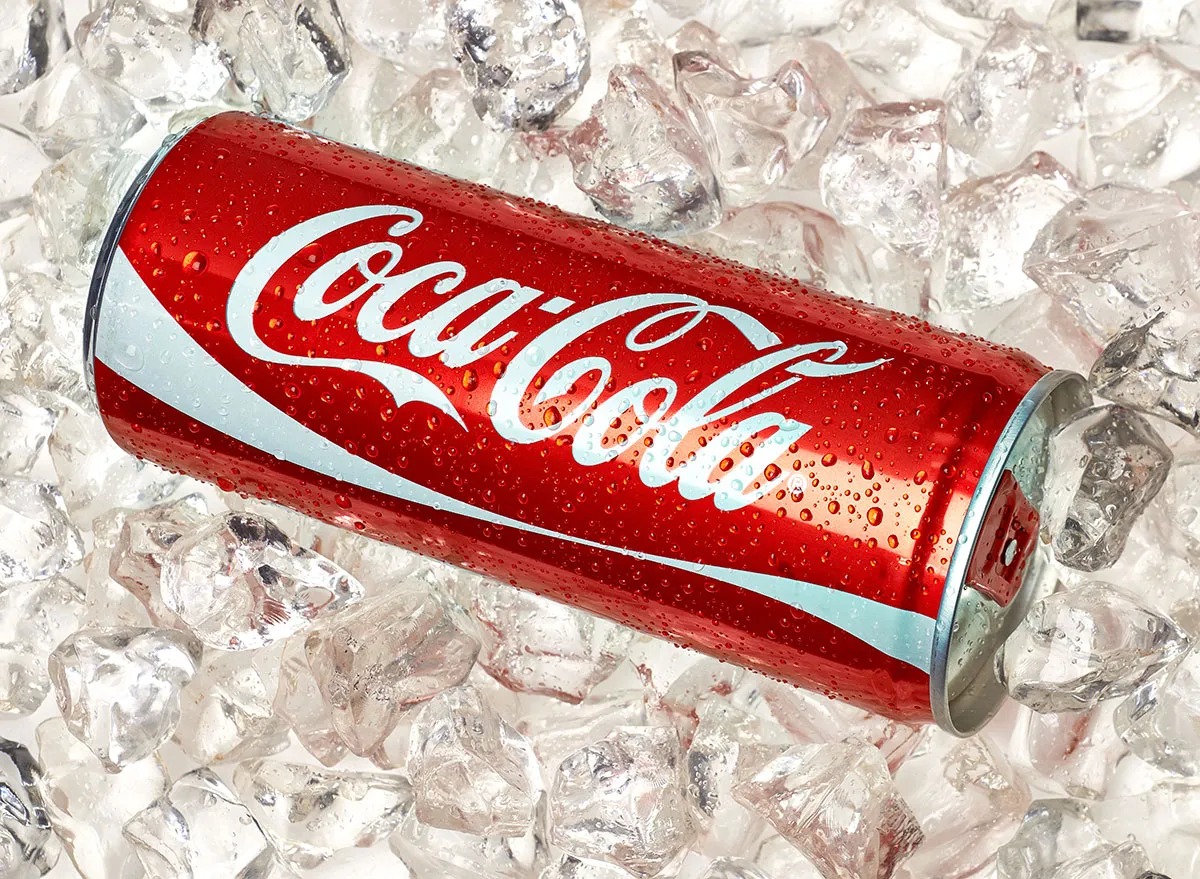
Stranger Things fans were excited to try New Coke when the company re-released it last summer in partnership with the ’80s-set Netflix series. But when New Coke hit the scene in 1985, consumers weren’t happy with the new soda formula. In fact, it had only been on sale for 79 days before the company brought back “Coca-Cola Classic” to appease fans.
Love Coke? Coca-Cola Just Debuted a Brand New Way to Get Your Soda.
The Coca-Cola bears have only been around since the ’90s
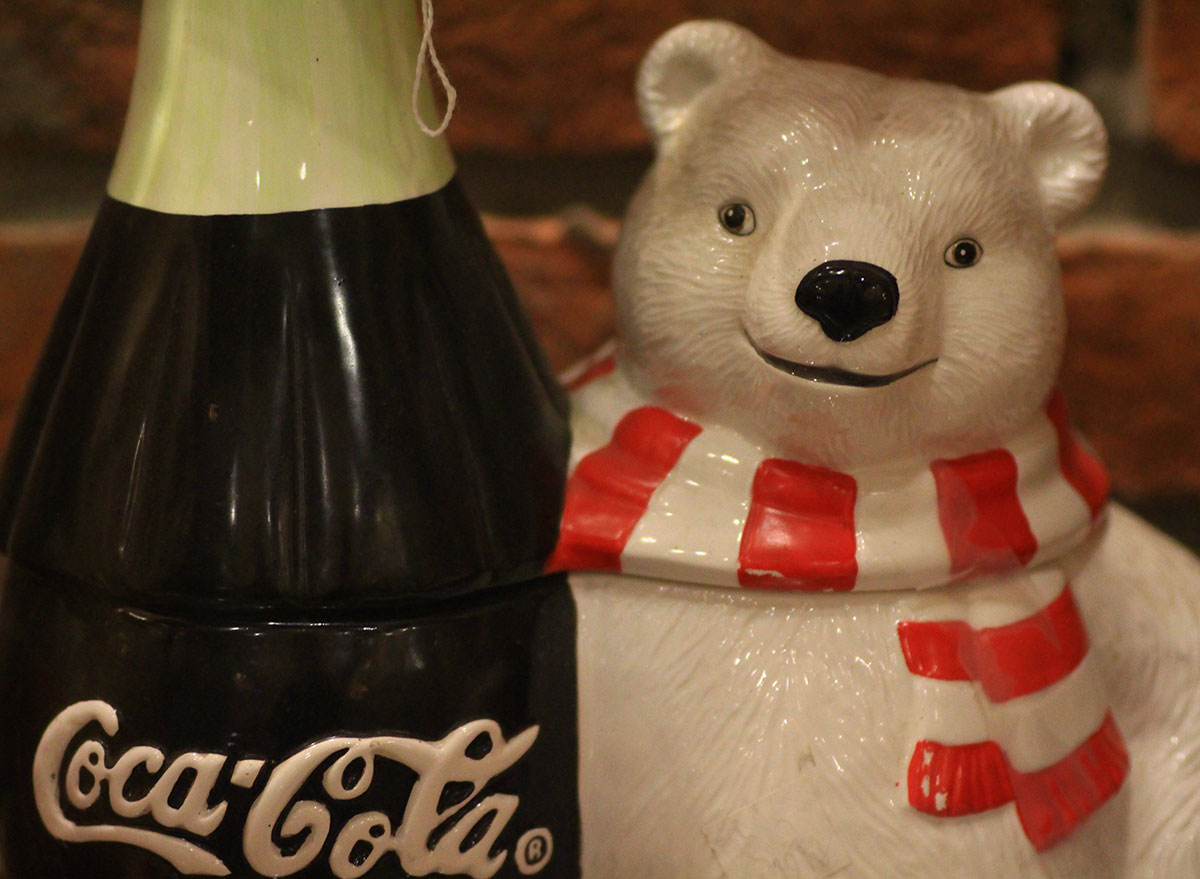
It’s hard to think of Coke without its holiday advertising and special-edition polar bear cans. But the bears didn’t become synonymous with the brand until 1993 when the Coca-Cola Company released its “Northern Lights” commercial. The polar bears have been a part of Coke’s holiday campaigns ever since.
Coke was the first soda in space
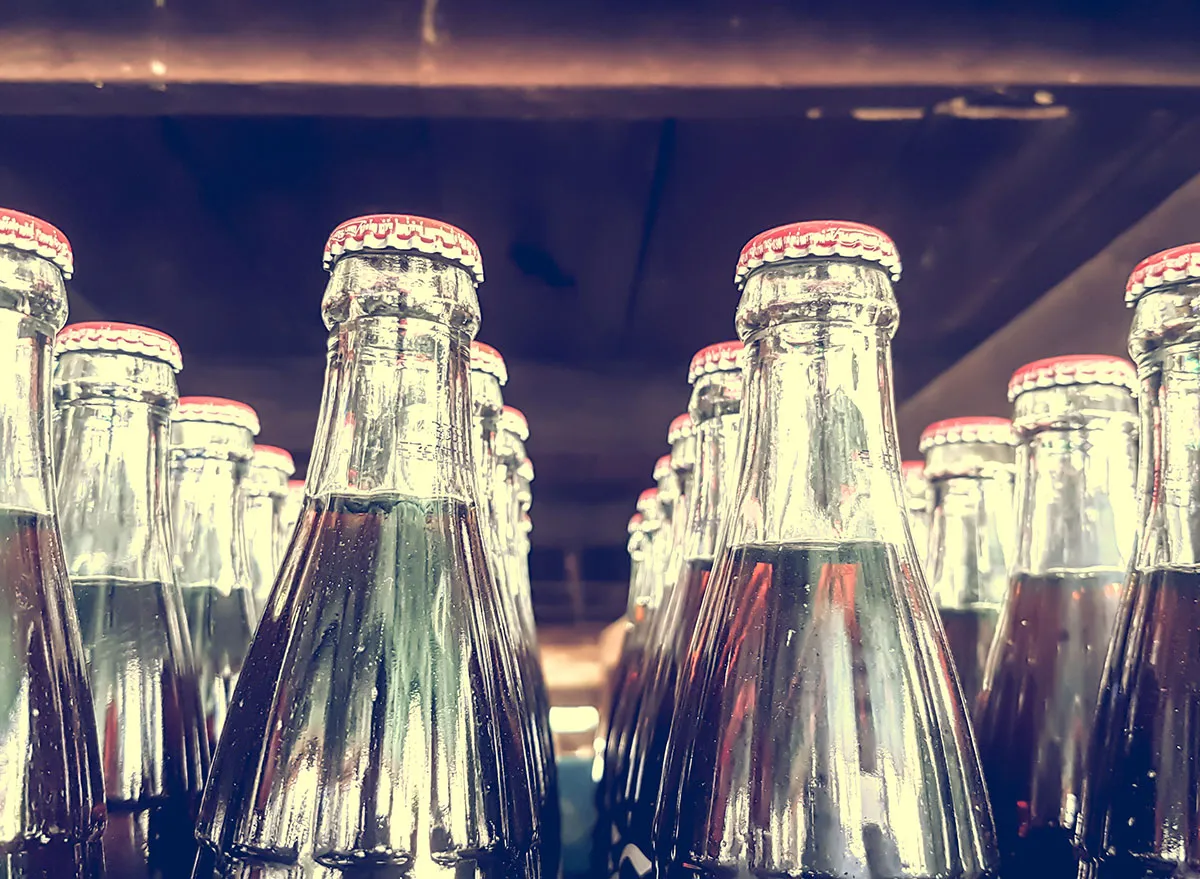
In 1985, astronauts drank Coke on the Challenger space shuttle. That marked the first soft drink consumption in space, according to the company.
(One thing you won’t find on astronauts’ missions, though, is astronaut ice cream. It’s never been in space, in part because its crumbs could pose safety risks.)
The Coca-Cola Company once thought the soda could replace your morning coffee
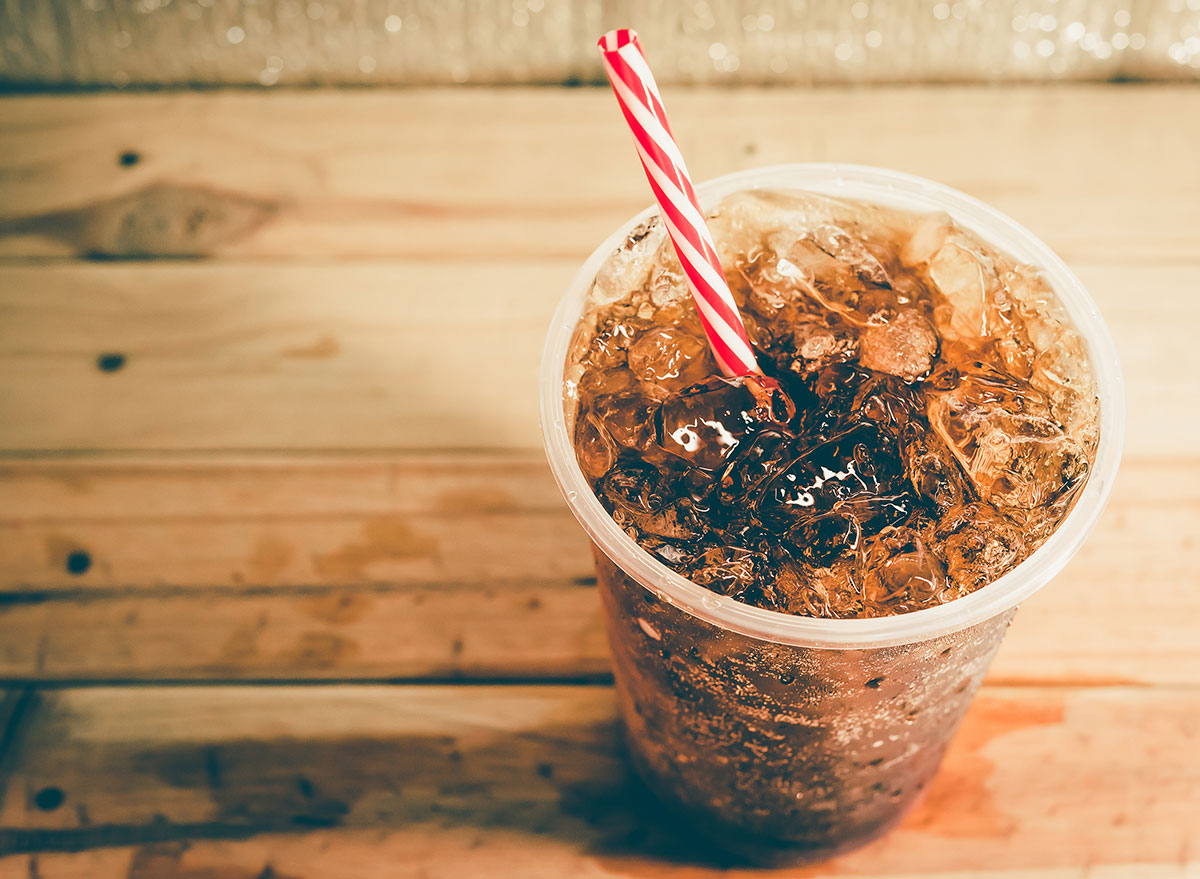
In the late 1980s, the company’s “Coke in the Morning” campaign urged people to replace their morning coffee with a Coke, The New York Times reported in 1988.
And while drinking soda might sound weird, it was more common at the time than you might expect. Citing figures from the Coca-Cola Company, the Times reported that 12% of soft drink sales included “morning consumption.” The ad campaign may not have led coffee fans to give up their morning java entirely, but it did put a new spin on drinking soda.
A pharmacist invented Coke—and it was advertised as having medical properties
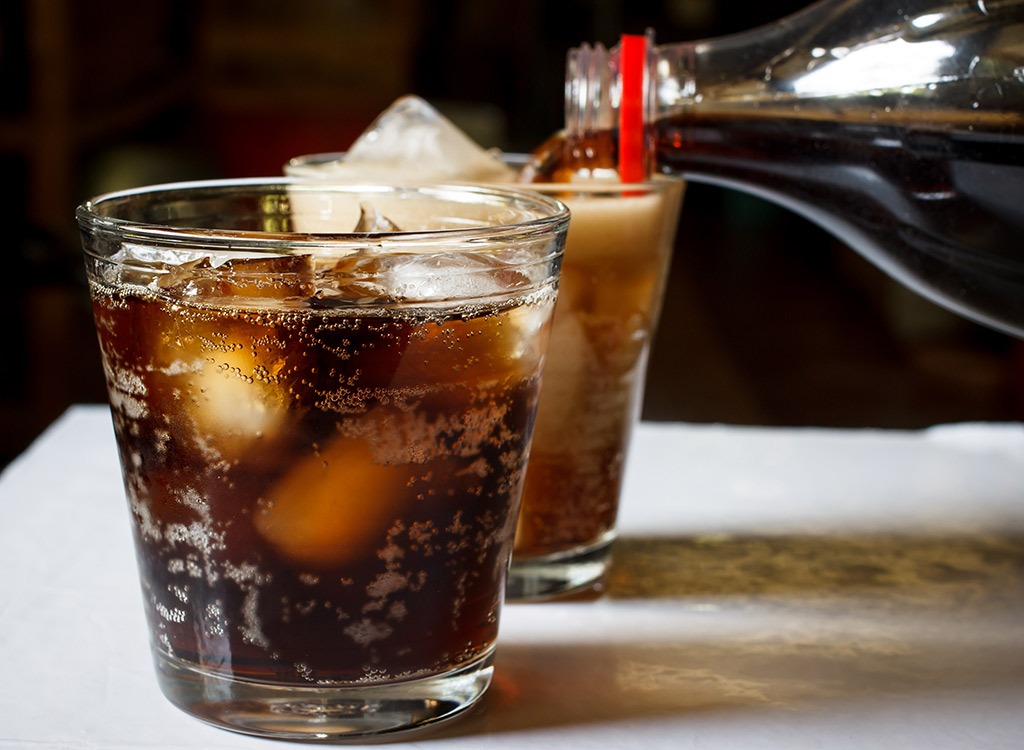
John Stith Pemberton, a pharmacist in Atlanta, created Coke in 1886, as we mentioned above. But the earliest ads for the soda suggested that it had medical benefits for consumers, too. One early print advertisement bills the soda as “a cure for all nervous affections,” including hysteria. Yeah, that’s probably not something modern doctors would agree with.
The original Coke bottle got its shape from a cocoa bean—but there’s no cocoa in the soda
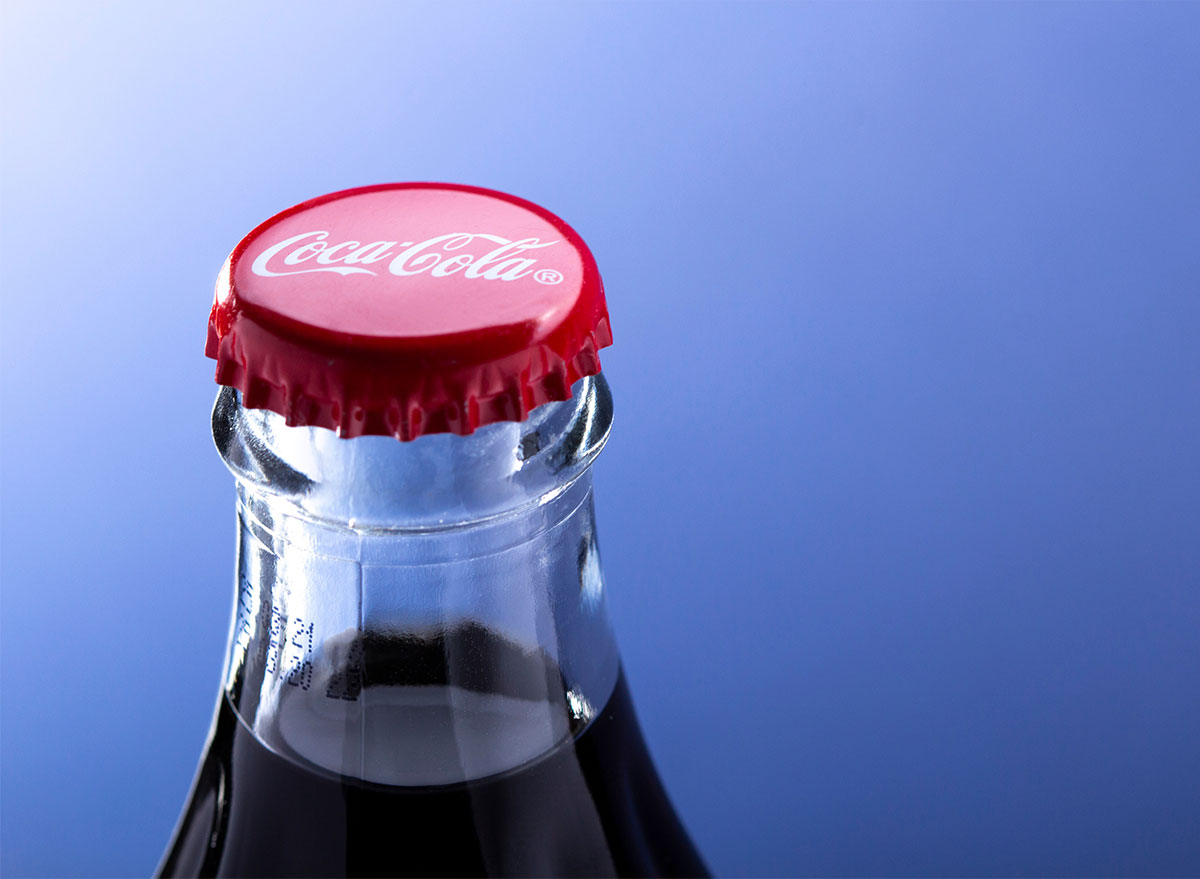
Remember how Coca-Cola created its unique bottle to stand out from the competition? Well, the earlier bottle designs might have led to a lot of confusion. As the company explains, its designers were inspired by “an illustration of a cocoa bean,” with the ridges and round shape. But at the time, Coke was made with trace ingredients from the coca plant, not the cocoa plant. Whether or not it was actually a mistake, it’s still pretty funny.
A Coke employee once got a prison sentence for trying to sell secrets to Pepsi
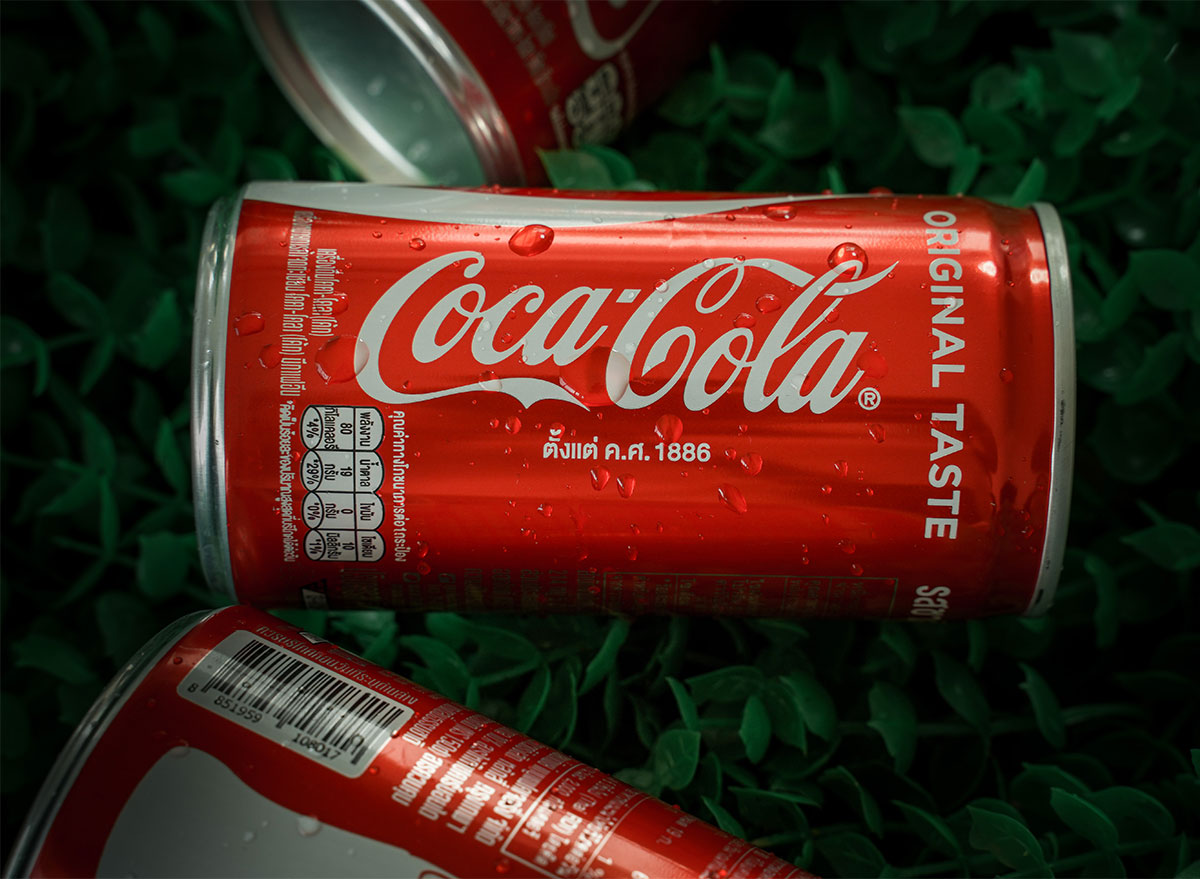
This might sound like something that’s straight out of a TV drama, but it really happened. In 2007, former Coca-Cola secretary Joya Williams received an eight-year prison sentence for trying to sell company secrets to rival soda maker Pepsi.
Williams allegedly tried to send “confidential documents and samples of products” from Coke to Pepsi, The Associated Press reported at the time.
As AP reported, Pepsi went to the FBI rather than accepting the trade secrets. An undercover investigation led to charges for Williams and two co-defendants.
There was once White Coke, for a very specific reason
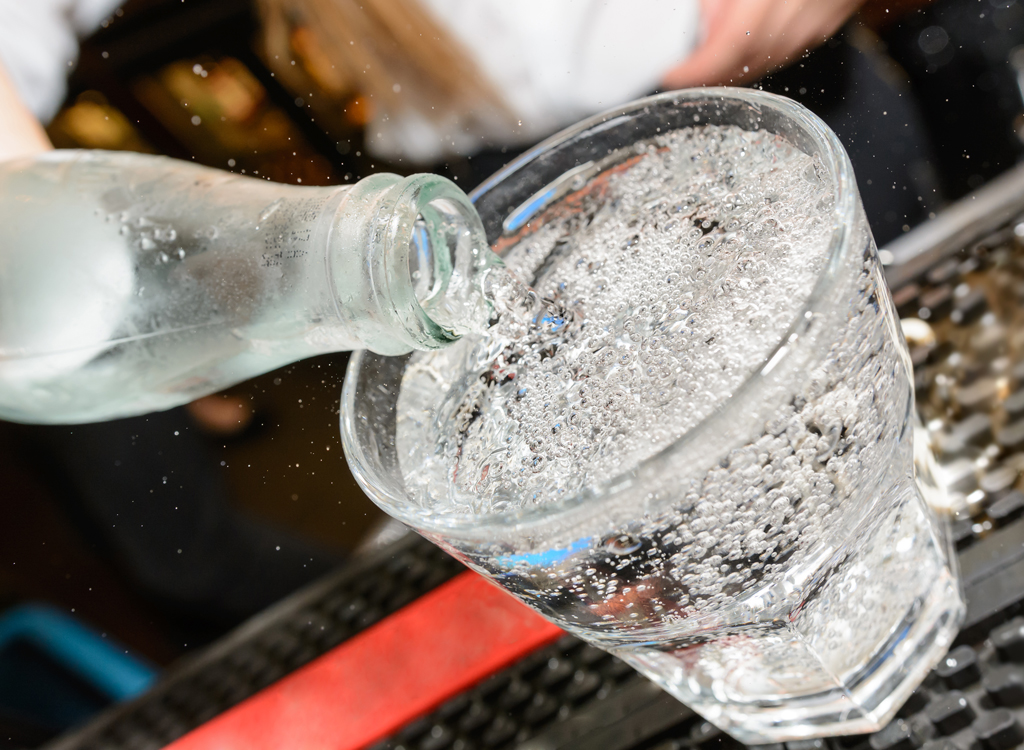
As the story goes, Russian general Georgy Zhukov, who fought in World War I and World War II, had a weakness for Coke. Not wanting his fellow Russians to see him drinking American Coke, he personally asked the company for a discreet version, Atlas Obscura explained. Coca-Cola went along with the plan, creating a “White Coke” in clear bottles for Zhukov to enjoy.
Mexico is the world’s top consumer of Coke products
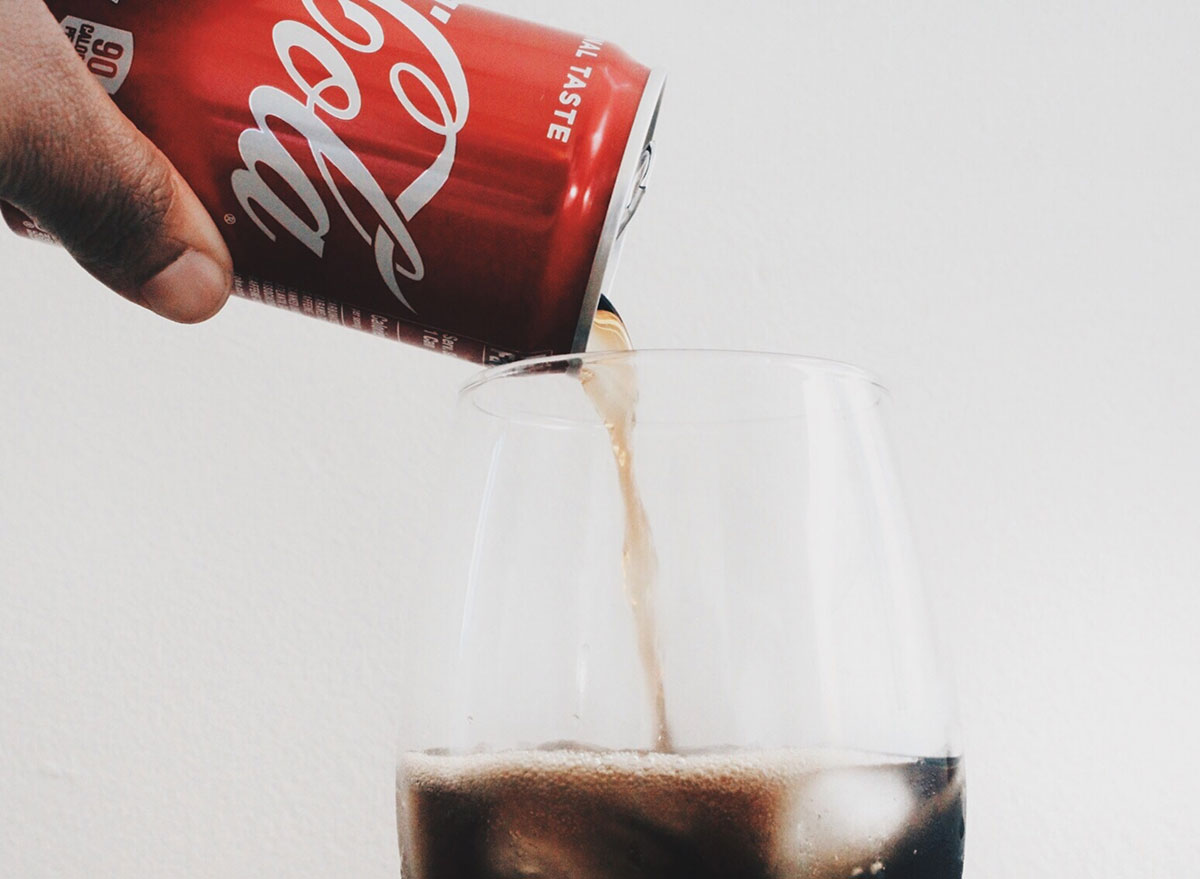
A 2013 PDF on the Coca-Cola Company’s website puts Mexico at the front of its consumption numbers. The average person in Mexico drinks 745 servings of Coke a year, according to the chart; in the United States, that number is 401. That includes all Coca-Cola Company products, not just soda, but it’s still a huge figure.
Coca-Cola invented coupons
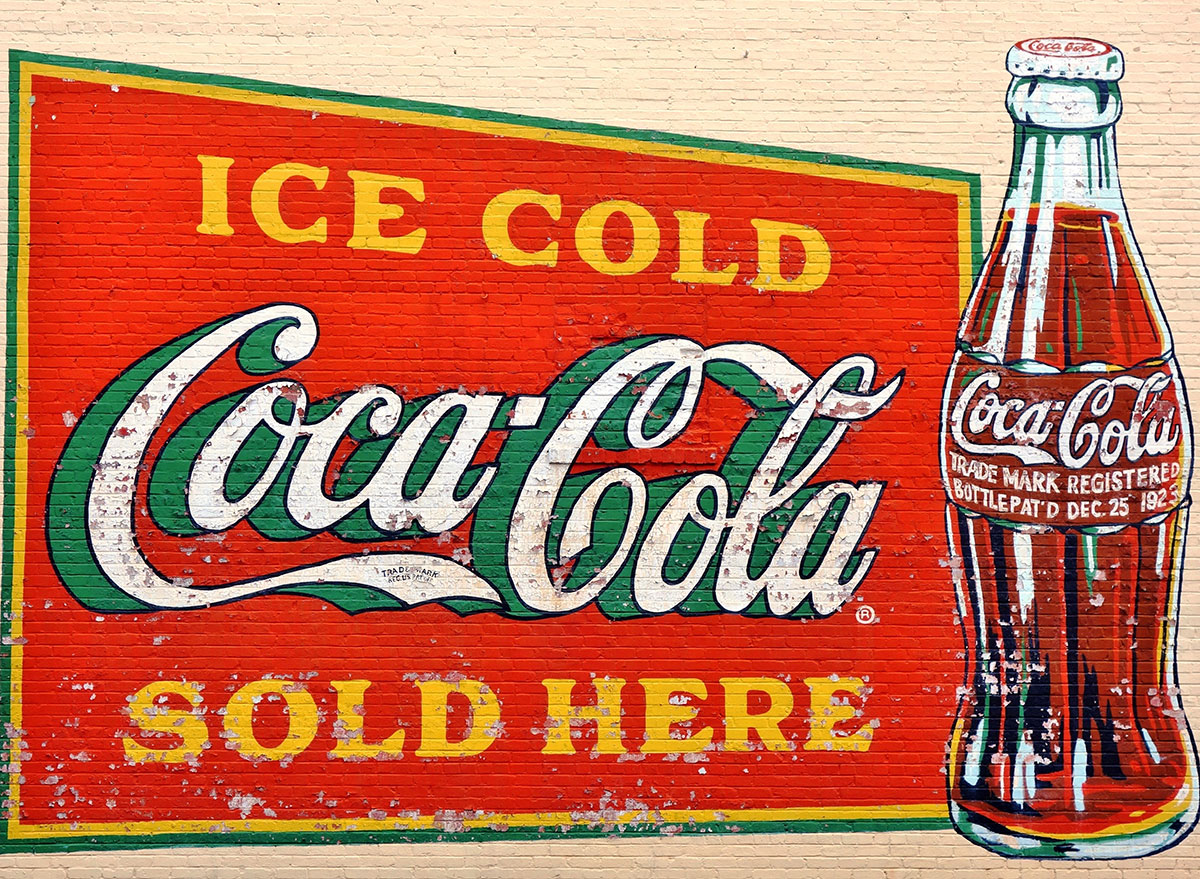
You may have heard that the first Coke servings were given away for free, but did you know there was a science behind it? As Wired reported, Coke became popular in the late 19th century in part thanks to “tickets” that could be redeemed for free servings. They weren’t much different from the coupons shoppers use today.
Coca-Cola once tried its hand at “drinkable advertising”
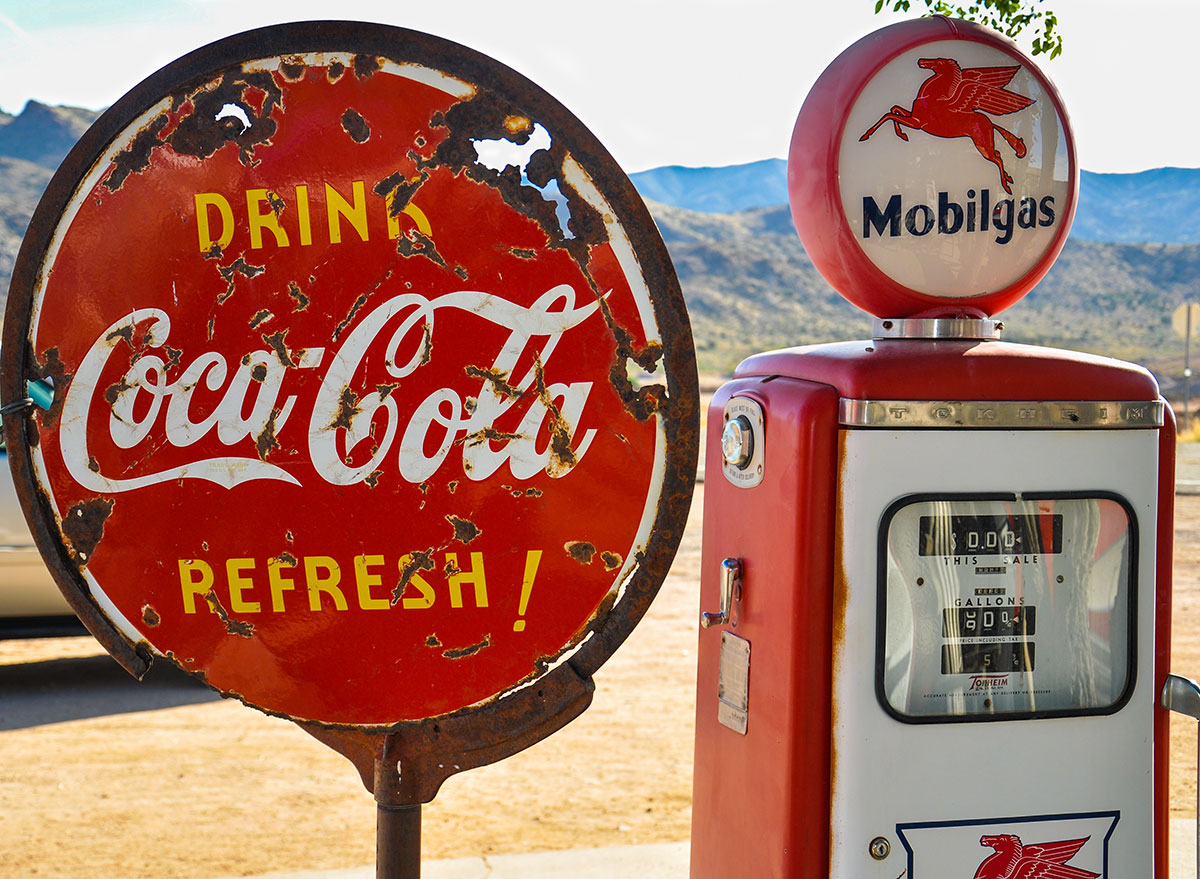
In 2015, Coca-Cola created ads that allowed viewers to use music service Shazam to get free Coke Zeros at local retailers.
The same year, Coca-Cola also created a Coke Zero billboard at the NCAA Final Four event in Indianapolis. The “Taste It” sign featured a tube of Coke Zero that fans could sample, right from the billboard. That’s one way to introduce people to your product.
Coca-Cola’s holiday cans have hidden images on them
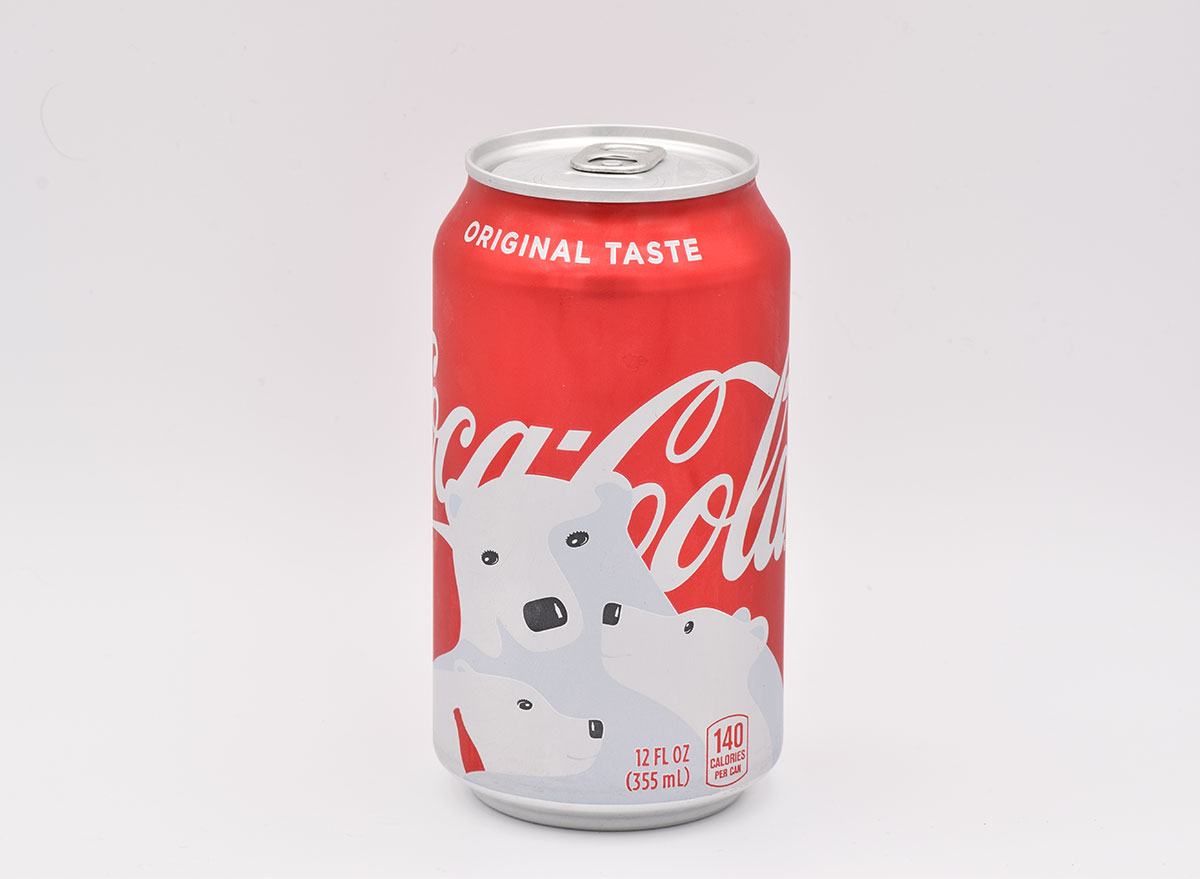
Sure, you know Coca-Cola’s adorable polar bears. But the company actually likes hiding other images within the cute illustrations. Look at this 2017 Coca-Cola holiday can, for instance. The bears’ noses feature white Coke bottles, and their eyes are shaped like upside-down bottle caps.
And for more fun secrets, check out these 11 Packaged Foods with Hidden Messages in Their Logos.
Coca-Cola’s typography is trademarked
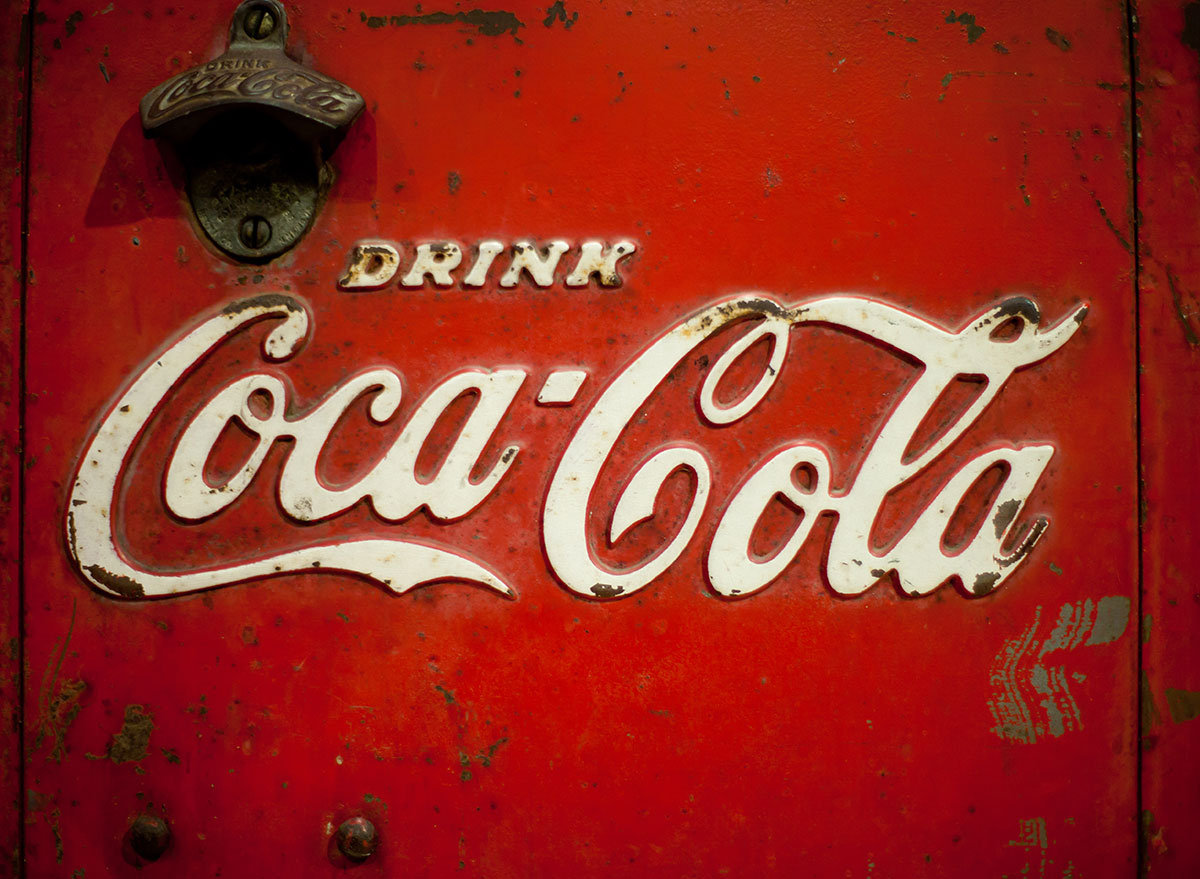
You won’t see other logos with the Coca-Cola font, and that’s not an accident. In 1893, the company registered the trademark for “Spencerian script” with the U.S. Patent Office.
Coca-Cola is one of the Olympics’ longest-running sponsors
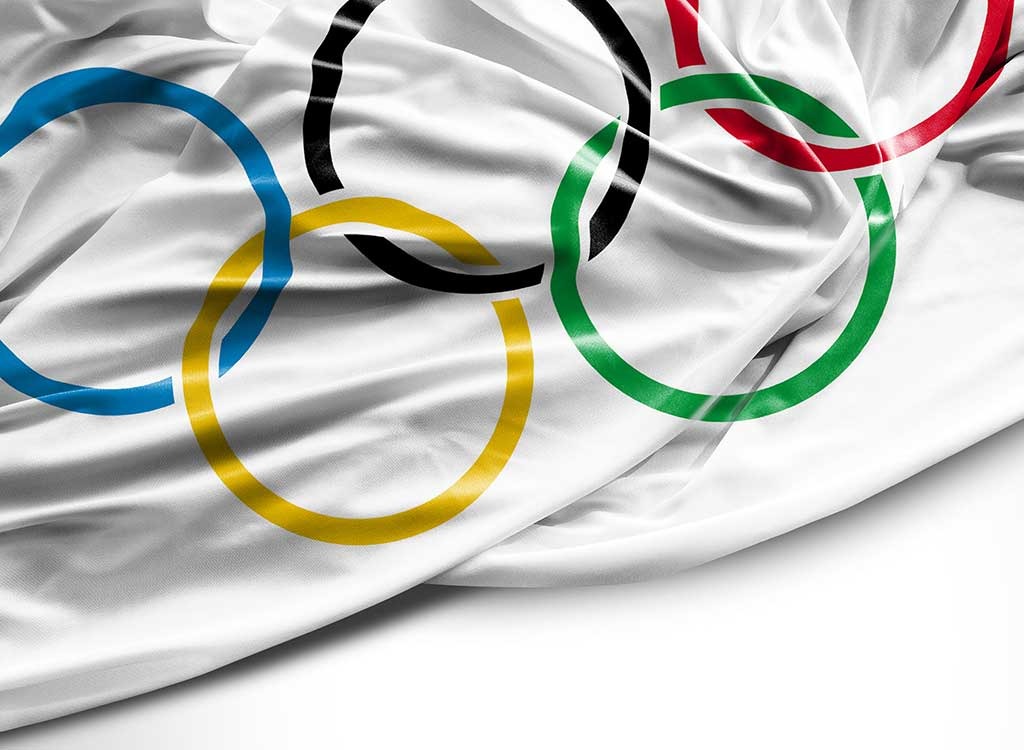
Coca-Cola has sponsored the Olympic Games since 1928. Sure, Coke isn’t the most hydrating option for athletes during a workout, but fans and Olympians alike have been enjoying Coke for decades, thanks to this partnership.
Coke can be used as a makeshift bug repellent
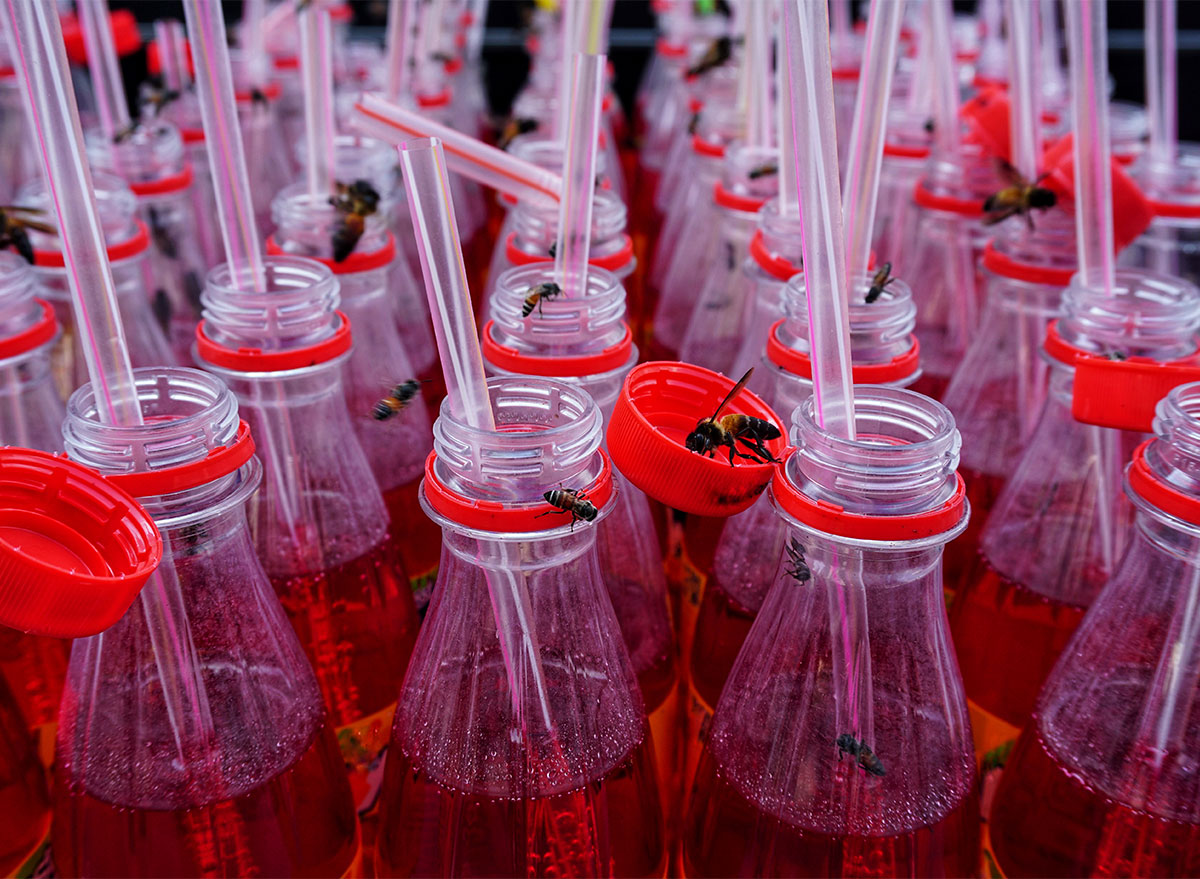
No, we don’t mean that you should douse yourself in soda before going outside. But bugs are attracted to sugar, and you can use that to your advantage. Setting out a Coke (or any other sweet drink), at a healthy distance away from where you’re eating, could draw the bugs toward the soda and away from you.
People swear by using Coke in recipes, too
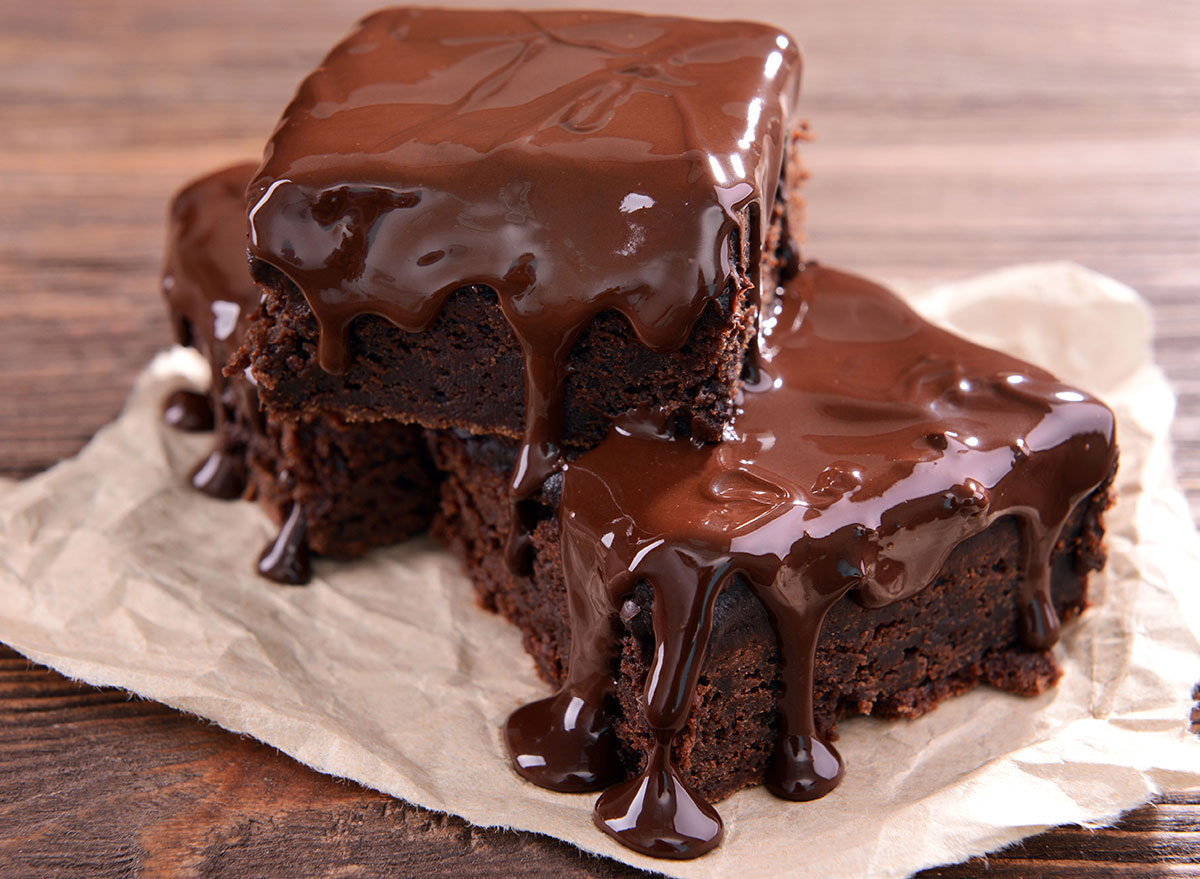
Cola chicken is a popular dish, as is Coca-Cola cake. It’s essentially a fudgy chocolate cake, but with the sweet taste of Coke added to the mixture.
Fanta came way before Diet Coke
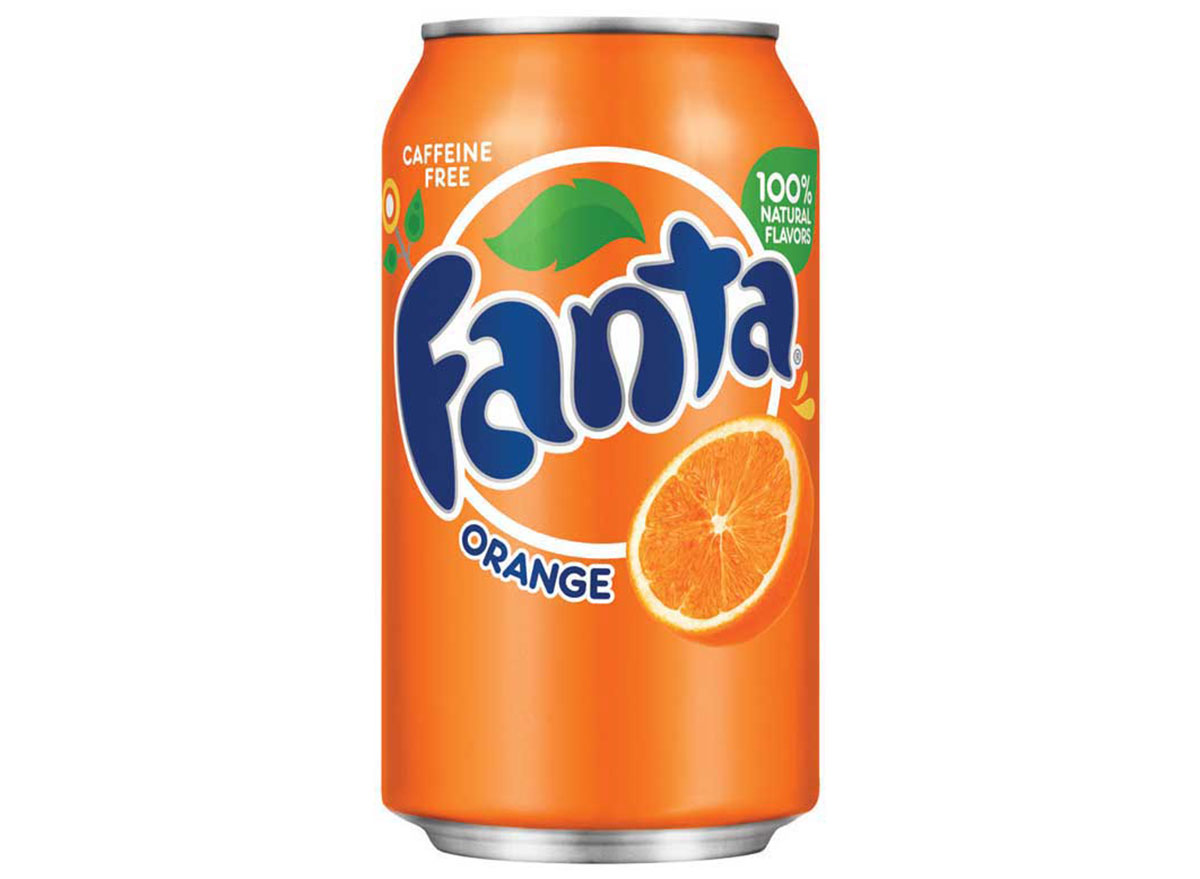
You might assume that when Coca-Cola started branching out into other drinks, Diet Coke would have been a natural fit. But Fanta Orange was introduced in Italy in 1955 and in the United States in 1960, the company notes on its website. Even Sprite hit the soda scene pretty early in the game, making its debut in 1961. Diet Coke, meanwhile, was introduced in 1982.
Another thing that came before Diet Coke? The company’s acquisition of Minute Maid, which happened in 1960.
Diet Coke wasn’t the company’s first diet soda
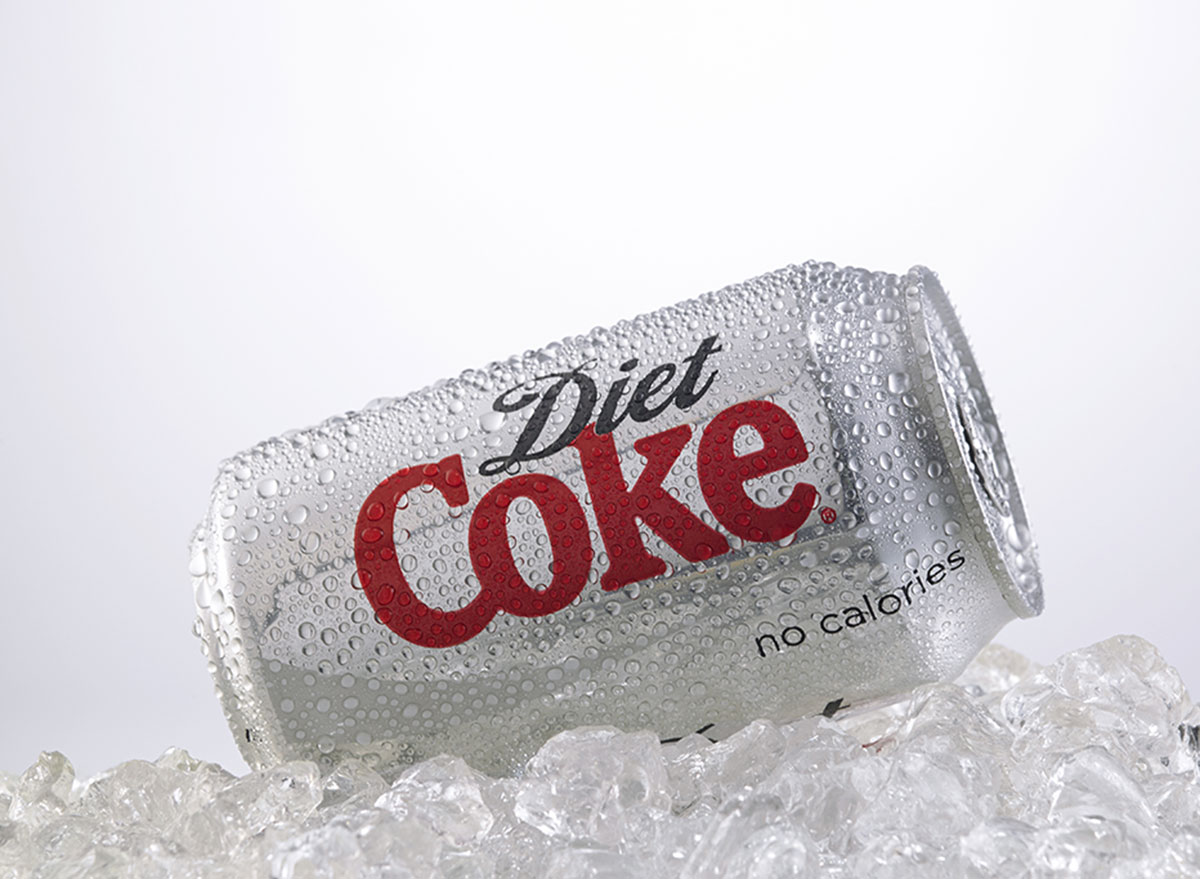
Yes, there were decades between Fanta’s release and Diet Coke’s. But the Coca-Cola Company actually entered the diet soda game in 1963. Tab, which was advertised as having “just one calorie,” was launched that year. When Diet Coke was launched, the company used a similar “only one calorie” phrasing to sell the new product.
Coca-Cola once ran a seriously gross giveaway promotion
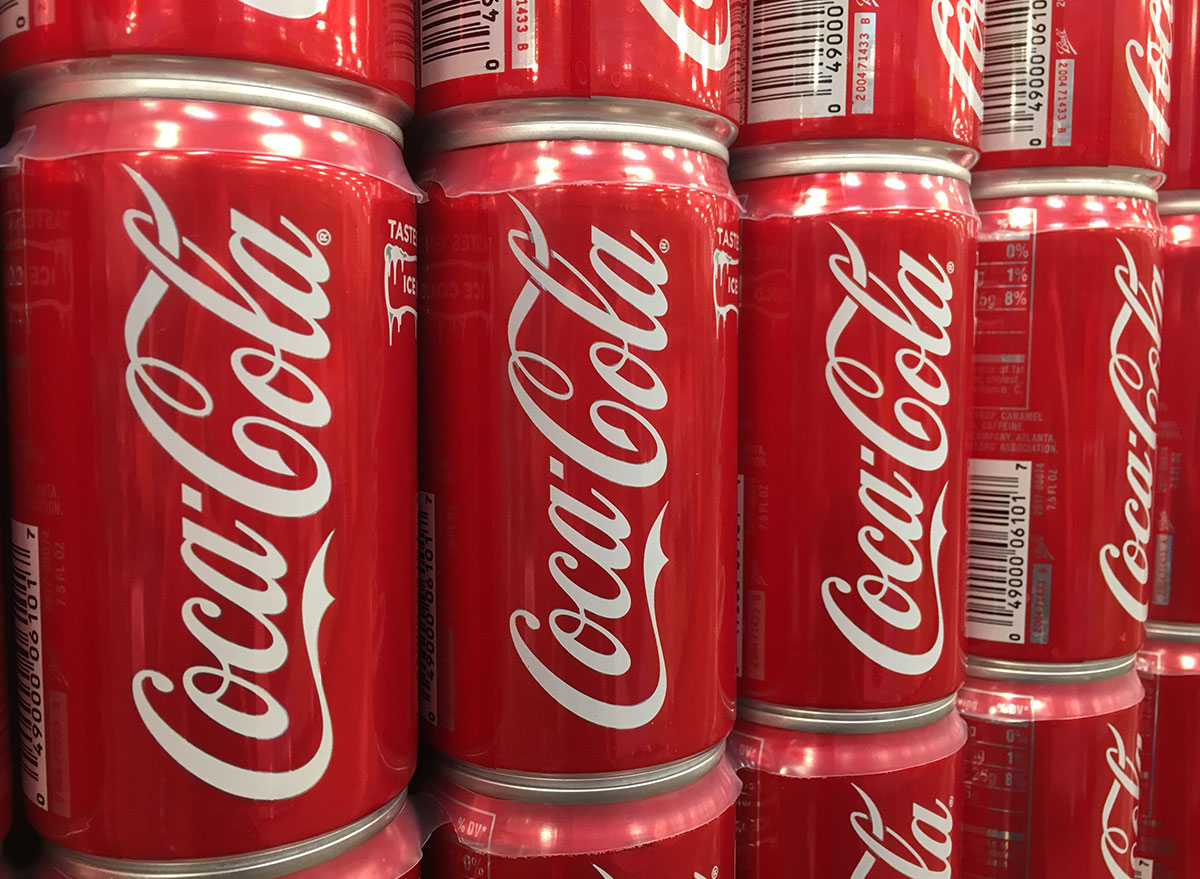
Coke’s “MagiCans” weren’t so magic at all. It’s hard to explain this 1990 promotion because it’s just so odd, but essentially, Coke was selling cans that weren’t actually filled with soda.
The Coca-Cola Company wanted to run a promotion where certain cans held cash or coupons, instead of Coke. But it also wanted to discourage users from lifting them and determining that the lighter cans would contain prizes. So instead of filling the cans with Coke, they filled them with water that was combined with “chlorine and foul-smelling ammonium sulfate,” The New York Times reported.
The “foul smell” was supposed to stop people from drinking them, but some, of course, did anyway. Lesson learned: Don’t put something in a drink container if you don’t want people to drink it.
North Korea is one of the only places where you can’t buy or sell Coke (at least officially)
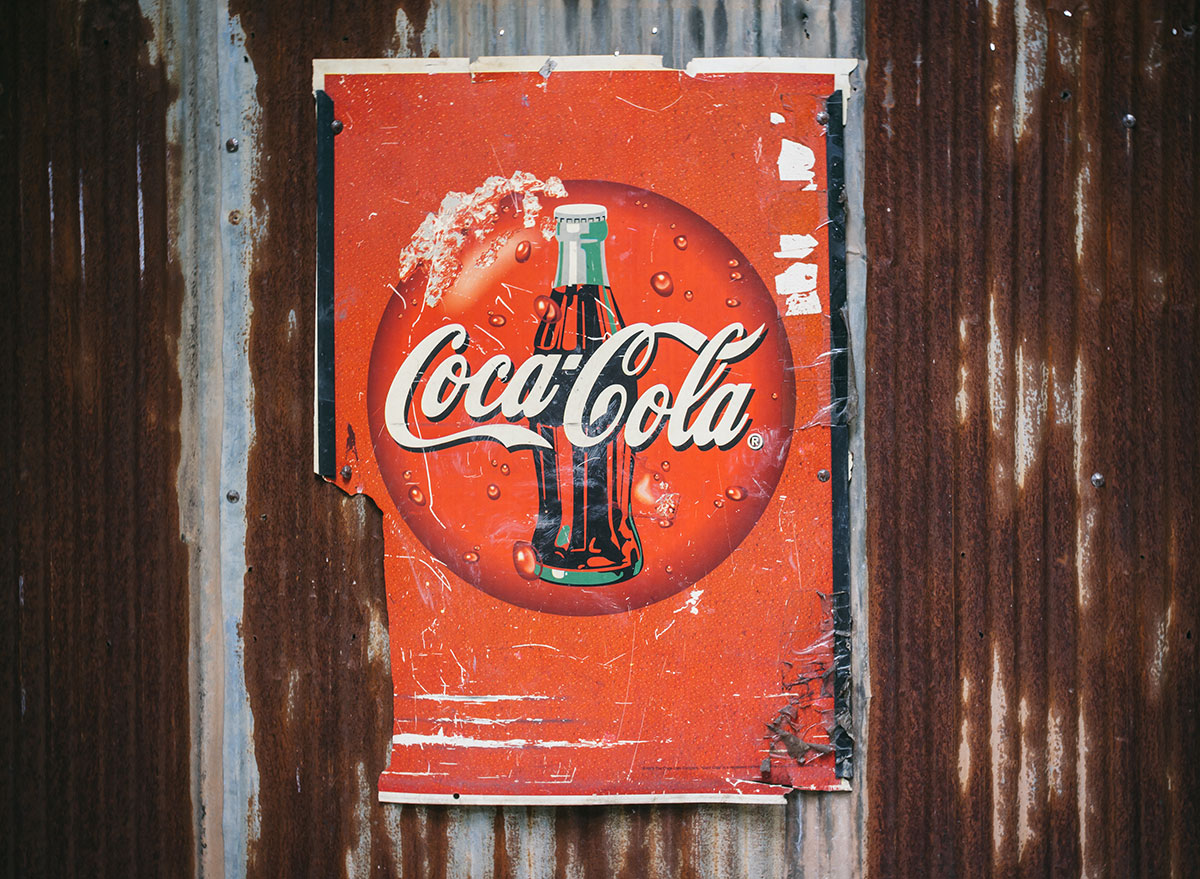
In 2017, the Associated Press reported that Cuba and North Korea are the only countries in which Coca-Cola “doesn’t officially operate.” Still, the outlet pointed out that there are plenty of Coke knockoffs for sale in North Korea. And imported Coke from China makes its way into “upscale grocery stores” in parts of the country, AP noted. Where there’s a will, there’s a way.
The St. John the Baptist church in Mexico uses Coke in religious services
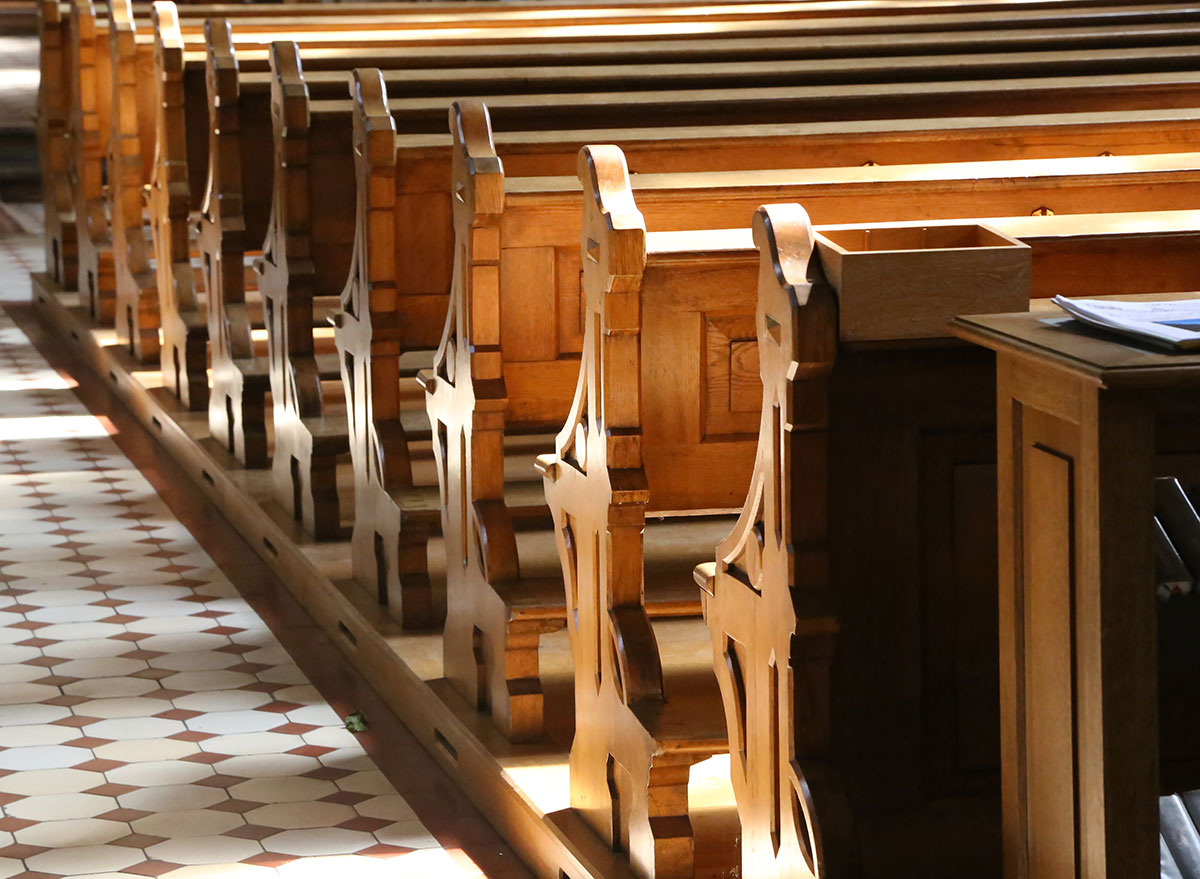
Colloquially known as the “Coca-Cola Church,” St. John the Baptist uses Coke during religious ceremonies. (Really!) Business Insider reported that the church’s followers think burping “purges evil from the soul.” And what better way to induce burps than by drinking soda?
Some people swear by drinking “milk Coke”
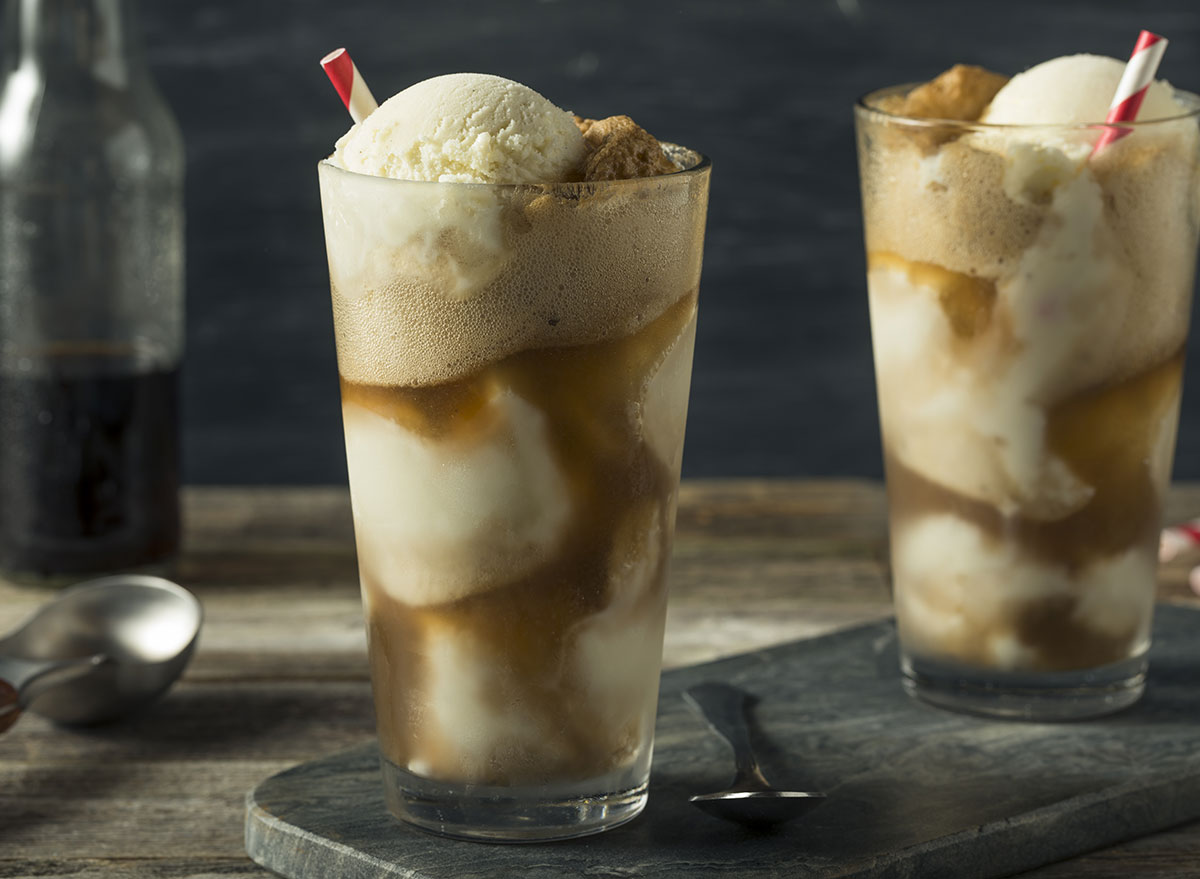
Sure, you’ve heard of a Coke float, but milk Coke? If this Twitter thread is any indication, it’s a real thing. If you’re looking for a creamier way to enjoy the classic soda, this could be worth a try.
Now that you know so many delicious facts about Coca-Cola, why not sit back and enjoy a glass of the sweet stuff? It’s maintained its popularity for a reason, and the history behind the drink just makes it that much better.
And for more great tips, don’t miss these 52 Life-Changing Kitchen Hacks That’ll Make You Enjoy Cooking Again.
